ITM
The Who and Why
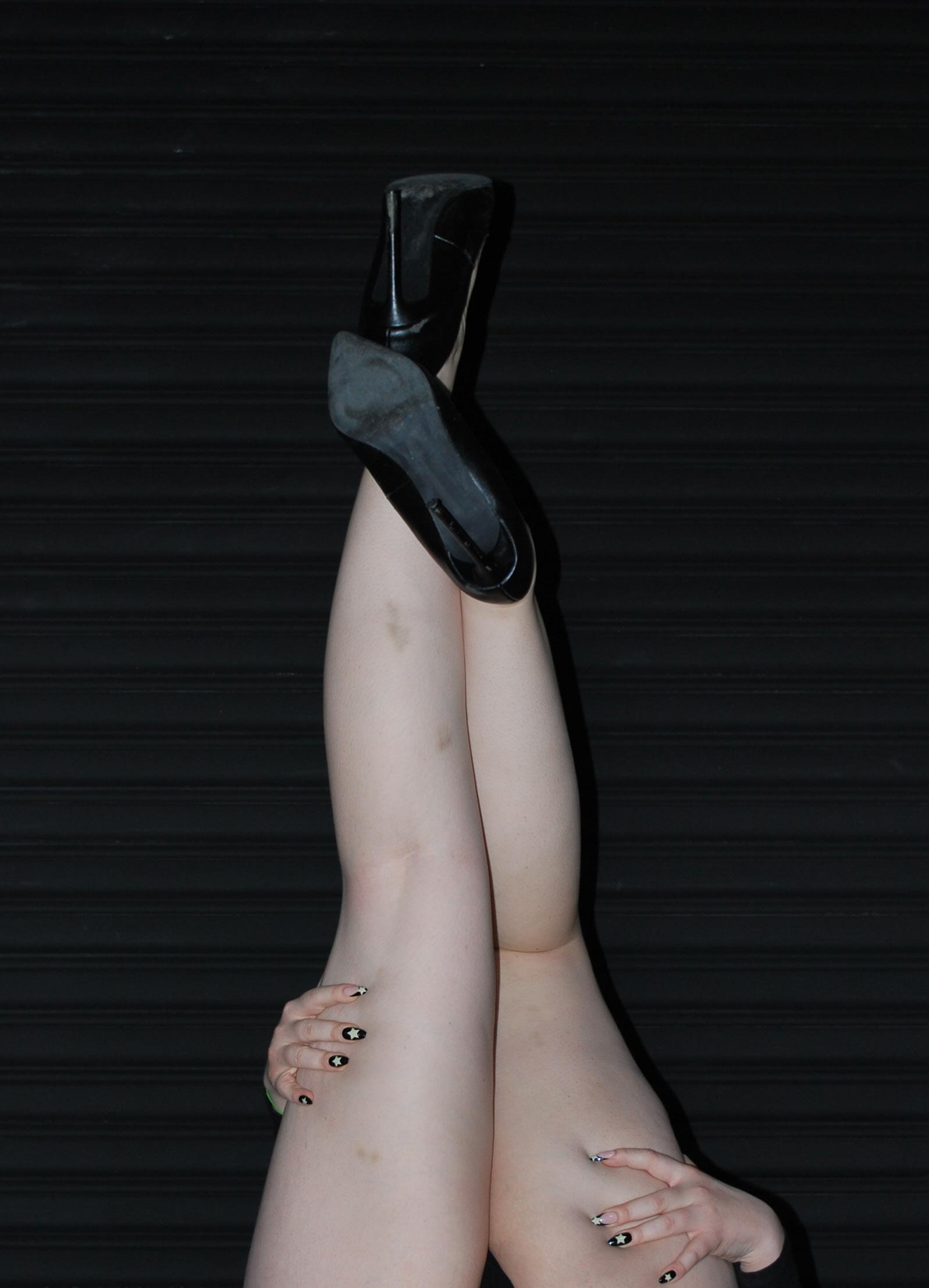


We would like to officially welcome you to In The Moment Magazine. This has been a passion project for both of us for a long time and we are excited to share it with you.
The college environment we are in seems to have shifted away from the arts in a way that neither of us was happy about. We wanted to create a space where students feel safe and comfortable to share their passion for the arts in a way that wasn’t possible before.
We started the process of building this magazine from the ground up last summer. Since that point we have been working tirelessly to create a solid foundation for a magazine that could withstand the test of time and continue after our graduation this spring, if students chose to do so. Making it a lasting arts space at Ohio Wesleyan.
We and our editors have put this magazine together with sheer willpower, desire for this place and space’s existence and by the skin of our teeth.
The articles that we have curated are ones that we hope provide a sense of what students are capable of, art that you may have never seen before and impart an inspiration to create something yourself.
We discuss sexuality, coming of age, sustainability in the fashion industry and much more. With diverse topics, we are hoping that everyone can find something they connect with.
We could not be more proud of what you are holding in your hands.
Love,
Anna & Elizabeth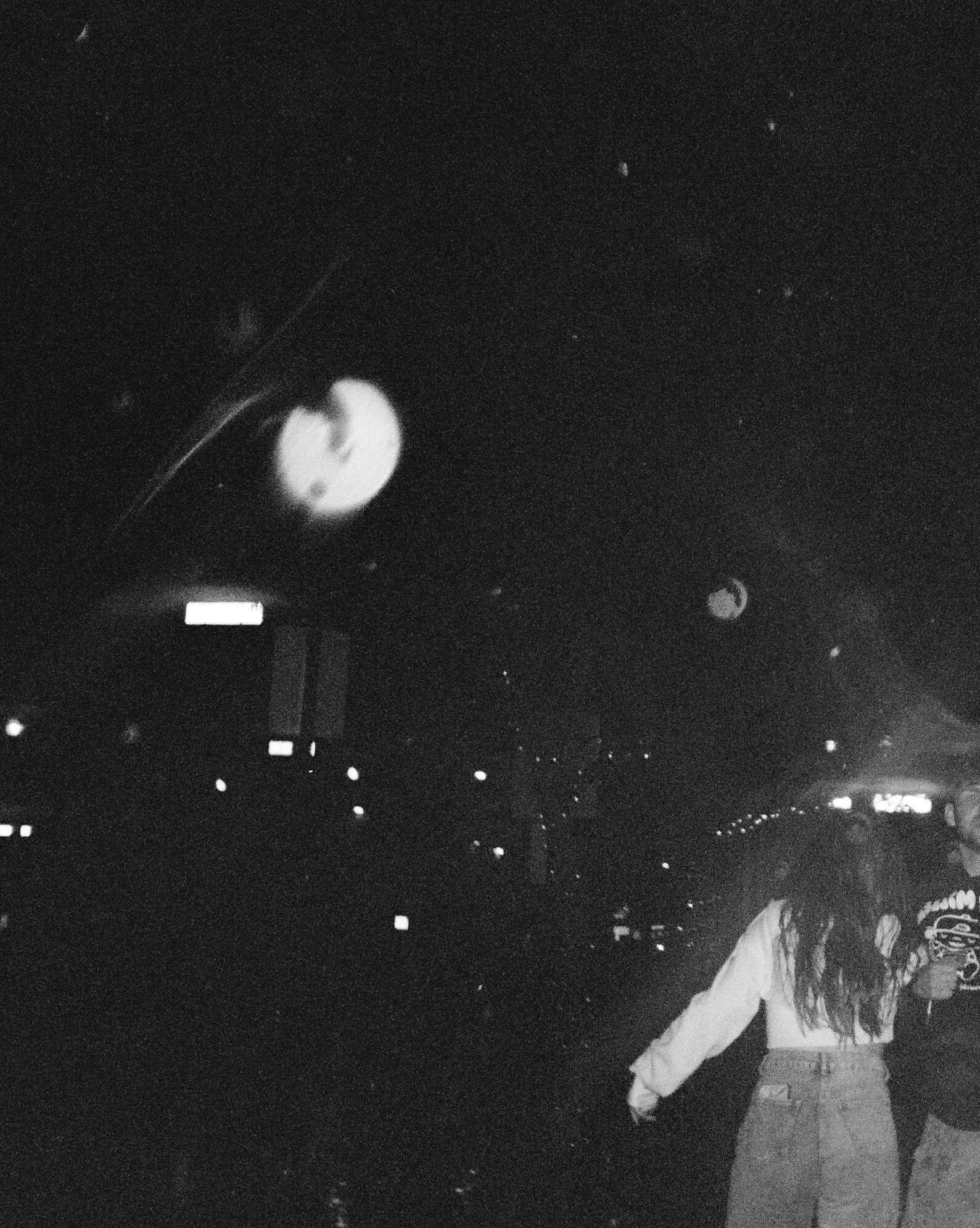

An exclusive interview with AEIR
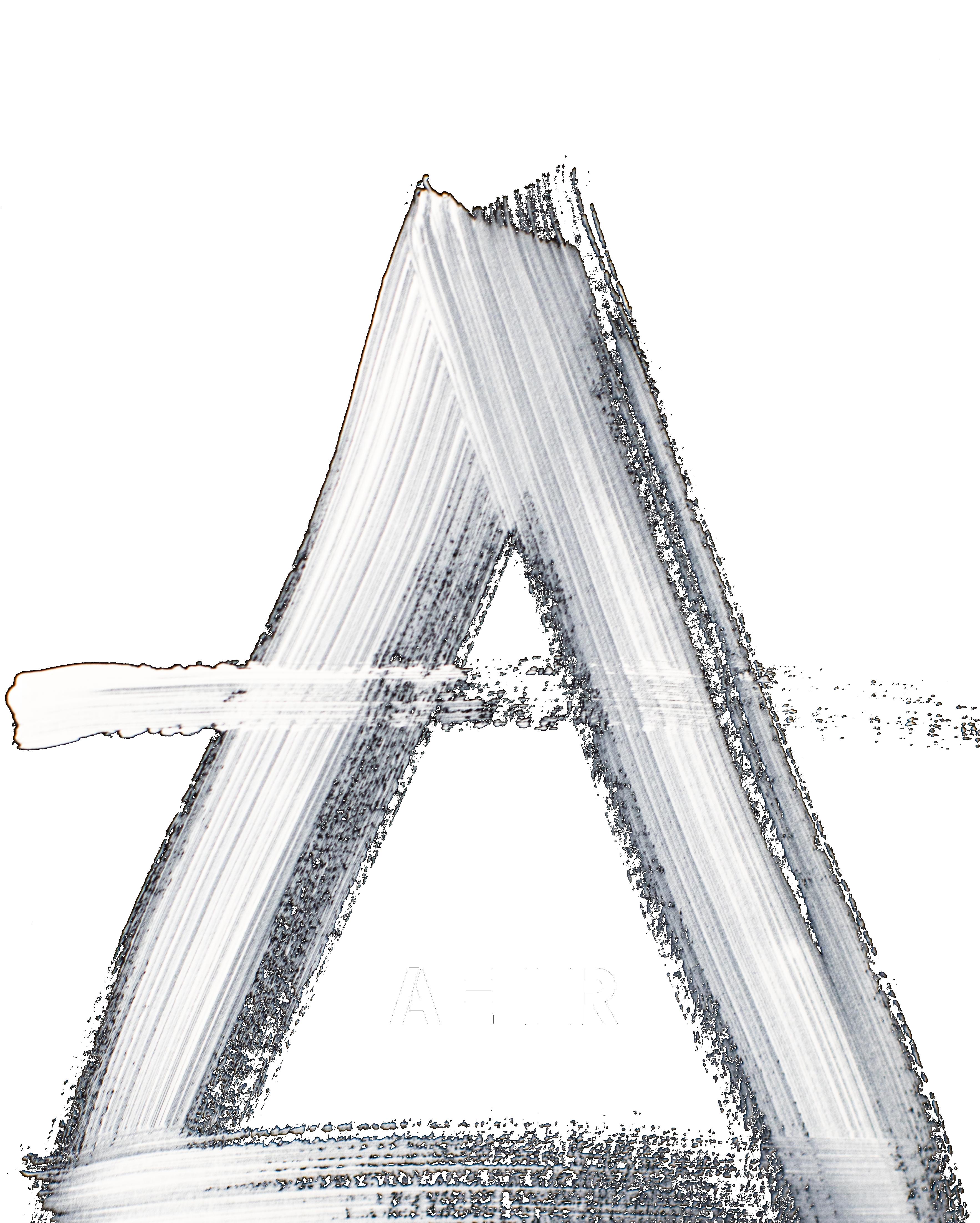
An exclusive interview with AEIR
There are many hidden stories in the quiet streets of Delaware, Ohio. In a garage studio on South Franklin Street, two men have been putting in copious amounts of time and ef fort in hopes of finding their golden ticket, and it has started to
I had the opportunity to sit down and talk with Lucas Ester line and Taylor Blake from the band AEIR. We met up in their practice garage which had an eclectic personality with post ers, flashing lights, music
Throughout our time to gether, Esterline and Wood opened up and were honest with me. Their genuine and loving personalities shined through and helped me un derstand exactly why they are doing as well as they are. They were even kind enough to share new music from their upcoming album, and I was blown
The group, formed in February 2020, is made up of local Columbus, Ohio bands Coya Hill and The Turbos. Since then, they have been writing songs, performing, and making a name for themselves. Currently, they are managed by Tim Buchenroth and signed to Perkins Palace, a new label from Jane’s Addiction drummer
Throughout the interview, Esterline and Wood exhibited strong ambition, and pure talent. As the lead singer and the lead guitarist of the
 Story by Kathy Habian
Story by Kathy Habian
substantial time getting where they are, and they aren’t afraid of having fun along the way. It was exciting to dive into the identity and self-expression of the group on the rise in an industry emphasizing rap, pop, hip-hop, and EDM (electronic dance music.)
This interview was edited for clarity and length.
Kathy Habian How did AEIR get started and how did you get to where you are today?
Lucas Esterline I wanted to sing specifically because there were two singers in my old band, The Turbos, and I was being told I’m not a singer and that I should stop singing. That pissed me off and then Taylor and I were in different bands and we had played shows together and I was like, I love your band I wish I was in your band, and he felt the same way. That was a running joke for several years so naturally, the first person I called when I wanted to start a new band was Taylor. It worked so well because they were having drummer problems with their band and our band was going through similar things with trying to get shows together and member problems. So he brought along one of his friends and I brought along one of my friends and we’ve had a few member changes since but the idea behind it for me was to sing and us to write songs together. We wanted to write more
like radio rock or alternative rock and try to make popular rock music.
Taylor Blake It’s not just like writing popular rock music though; obviously, you know you want to make music that’s going to appeal to a lot of people but what’s the point of making music if it’s not going to appeal to yourself? As long as you connect as a band then you’re fucking golden. If you’re out there just playing music just for other people you know that’s one thing, but if you’re playing it for yourself then you can relate to other people and other people can relate to that song, and that’s huge. That’s the golden ticket.
LE Fast forward all the way to
But what’s the point of making music if it’s not going to appeal to yourself?
“
now, Taylor wrote a song called ‘Body’ that was dope as fuck. We got a demo and I sent it to our current manager, Tim… All of a sudden the band took a turn from all of us getting together and it being a project kind of a supergroup Columbus band essentially, into getting signed to management. It just really quickly snowballed to here, and now we’re sitting here talking to you.
KH Where did the name AEIR come from?
LE I was writing in the back of a van and putting a bunch of names in my lyric book. I was circling ones that I liked and heir, like an heir to the throne, was one of the names that stuck out. So I looked it up (online) and that was taken so I stylized it with an A, and then Taylor’s wife at some point came up with the AEIR symbol. Then a friend of ours, Addison Jones, did the main symbol that we have on our merch and everything. Everybody hated it at first.
TB I wasn’t a fan of the misspelling of it but I did end up falling in love with it.
KH Where is AEIR headed? What does the future look like?
LE All the way to the top, baby.
TB One thing that a lot of people don’t understand is that once you start working with other people, as much as it is still your project, you have to include everyone else and there’s a lot of people we’re working with that know a lot more about the music industry than we do.
LE We’re doing business which is good and bad because as an artist you feel like you just want music out but also you know that there’s a reason why you signed a contract. I don’t have a business mind, I have a creative mind and I just want to play music, I want to sing and I want to drink wine and whiskey with Taylor after our show and get crazy and have fun. That’s the hard part.

TB I can tell you our first album will be out sometime this year. As far as when our next single will be released, that’s still in the works with everyone that’s involved in the projects.”
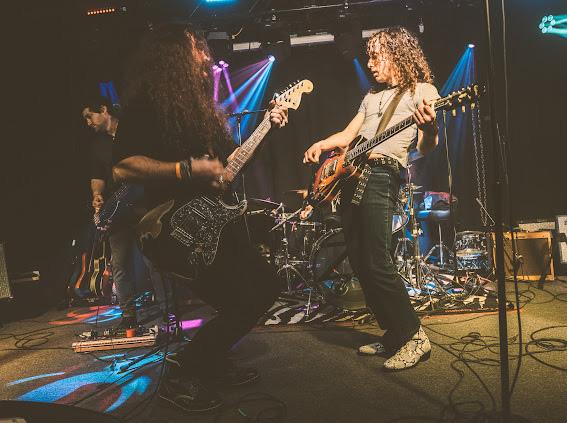
KH What is the band’s style and what are your personal styles?
LE Our style is hard to describe because we have alt-rock songs similar to Catfish the Bottleman, Kings of Leon or Foo Fighters, but then we’ll have songs where I’m screaming as hard as I can and it’s a little heavy. A good way to describe it would be like Foo Fighters or a big modern rock band where they have songs that are really alternative and it’s more of a spacey soundscape but then have other ones that are hard with yelling and it’s more aggressive.
TB My personal style is very ‘80s and ‘90s. Not that I want to be lumped into something but I love how flamboyant and extra the ‘80s were and the ‘90s were so downplayed. You combine them together and get a modest and cool look. I love a cutoff vest and it sucks that it went out of style, that’s what my dad did.
LE: “I am like a Swiss Army knife. I can wear anything.
Most of my clothes are women’s clothes, including everything I’m wearing right now. We try to go grunge but we’re trying to elevate our style to look a little more polished.
KH Who is your biggest musical inspiration?
TB Pearl Jam and a lot of ‘90s influence, a lot of what my mom listened to, and Alanis Morisette.
LE For me, it started out with Led Zepplin which was probably one of my dad’s favorite bands and I grew up listening to his music. My biggest influence right now is Nothing But Thieves, Jeff Buckley, Highly Suspect, and Bad Flower which is probably one of my favorite bands right now, and then Cleopatrick. Unless you’re constantly looking for new inspirations as an artist, then your mind kind of stays stuck with one sound or your own personal sound and you might not evolve.
KH Other than music, how do you like to express yourselves?
LE Playing sports is a good thing for both of us, I used to be really good at soccer but then I got hurt. Taylor was like the best football player at Delaware Hayes. I also just couldn’t stop playing rock and roll music. But now I like yard games, video games when I have time, and anything competitive, even just racing each other.
TB Football is to die for, I love football. I used to be an incredibly talented football player, not to toot my own horn. But I was really good at it and football is my favorite activity.
KH What is your favorite part about being in a band?
LE Being in a band, you get to go to all these sweet concerts and go backstage but for me, it’s the pure bliss of that 30 minutes on stage zipping by in what feels like five minutes; it’s a high that’s irreplaceable. The rehearsals get stagnant and a bit suck sometimes but you just have to be so committed and disciplined. There are days where you walk in and don’t want to do it but you show up and hang out with your friends and have such a good time.
TB It’s the concerts where it’s blissful perfection, and it’s amazing. As an artist playing those shows is the same way you might feel being in the audience. All these people are there just to feel something and if you can get them to connect to something, it’s magic.
LE And, then you meet those people and share that connection with them.
TB We’ve met so many cool people after shows. One girl had me sign her arm and got it tattooed. No matter what the style is, we’re going to feel it and that’s all we want everyone else to do.
Unless you’re constantly looking for new inspirations as an artist, then your mind kind of stays stuck with one sound or your own personal sound and you might not “
I think that’s why people go to see shows, they can connect to something that’s in the atmosphere. It’s more than what you or I can really put into words, it’s just there and if you can grab onto that, that’s amazing.
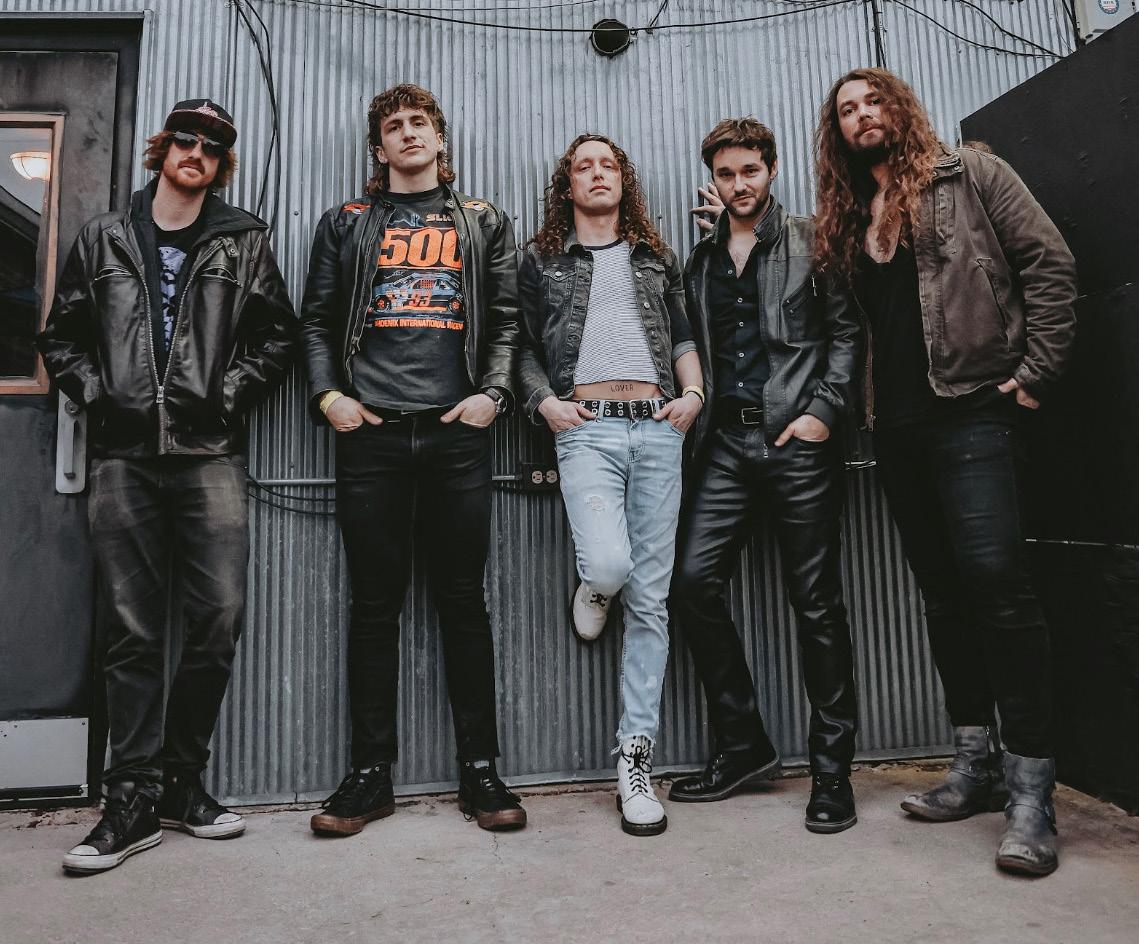

LE There’s a lot of emphasis on the emotional connection to the lyrics, melody and content of the message. There are songs where it doesn’t matter what the artist was saying when they wrote it, a fan will attach their own meaning to it.
TB That’s the goal when you write a song, it’s whatever the listener wants it to be. Everyone that writes a song knows what they view that song as.
LE Trying to describe what your song is about in an articulate way is difficult. It’s hard to describe a feeling sometimes, which is why you made the song.
TB Sometimes you also have no idea when you’re writing, it’s like this is just what I’m feeling.
LE You know why, it just spills out. You can start with an idea. about just that, and that’s how I write.
Sometimes I get too introspective, but then Taylor will really write about a certain thing more often. We had a talk early on about trying to make sure we’re not just on our own rail lines when writing. Then songs just kept blossoming from there that were different.
KH There are plenty of smalltown rock bands that exist, and most don’t make it very far. There is something that makes this group different from the crowd though. AEIR is ready to show the world and they have got it. They have performed at big festivals like Louder Than Life, Aftershock, Sonic Temple, Inkcarceration and Welcome to Rockville. Their dedication and down-to-earth personalities show tremendous promise for a great future. There is no stopping Lucas and Taylor on their journey to the top.
Editor’s note: AEIR released their new single Bottom Dollar Heart on August 22 2023. Bottom Dollar Heart and more of AEIR’s music can be found on major streaming services like Spotify and Apple Music
Photo Credits
First page: Mitchell Multimedia
Page two: Undark Photography
Page three: Mitchell Multimedia
Page four top right: Roman Sobus
Photography
Page four bottom left: Gabrielle Goulding
Sometimes you also have no idea when you’re writing, it’s like this is just what I’m feeling.
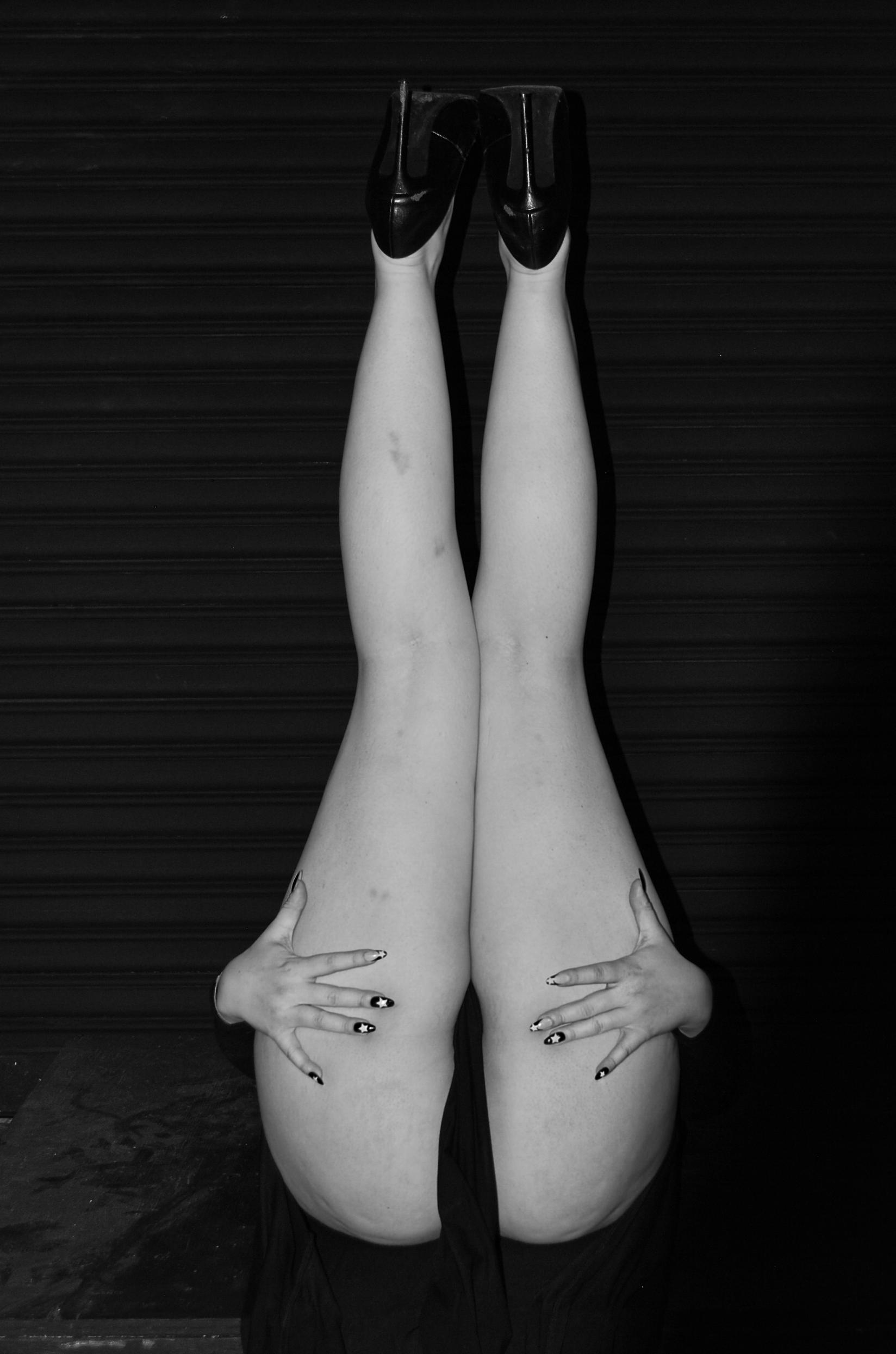 Directed: Liz Nebel & Payton Andisman
Writing; Payton Andisman
Photo: Jason Tannenbaum Style: Individual Models 8
Directed: Liz Nebel & Payton Andisman
Writing; Payton Andisman
Photo: Jason Tannenbaum Style: Individual Models 8
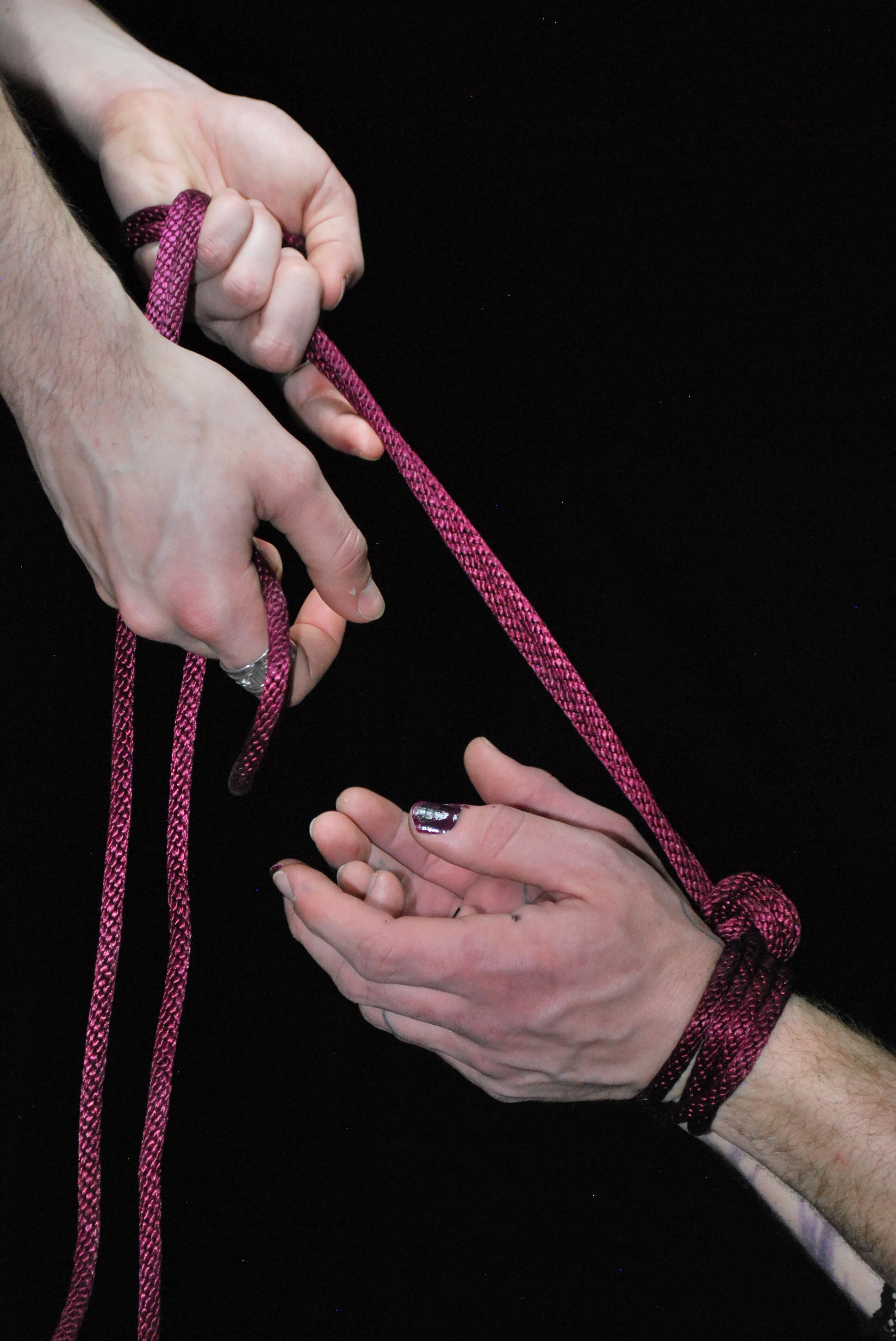
No matter what language, there is power in the intentional words we choose.
How do we vocalize negative opinions of another’s preferences?
“Ew”
“Disgusting”
“Sin”
What are the implications of the language we choose? What are the consequences of disregard and disrespect?
Shame
Regret
Hiding
Consider: What happens when one speaks loudly and freely against the topics of desire of another? Who is surrounding them when they propagate ideas of shame?
In the shame riddled silence of another hides:
Empowerment
Fulfilment
Self love
Do some hide behind the degradation of others to mask their own shame?
When things like kink, BDSM, or fetish emerge in conversation, the most important ideas often go unsaid:
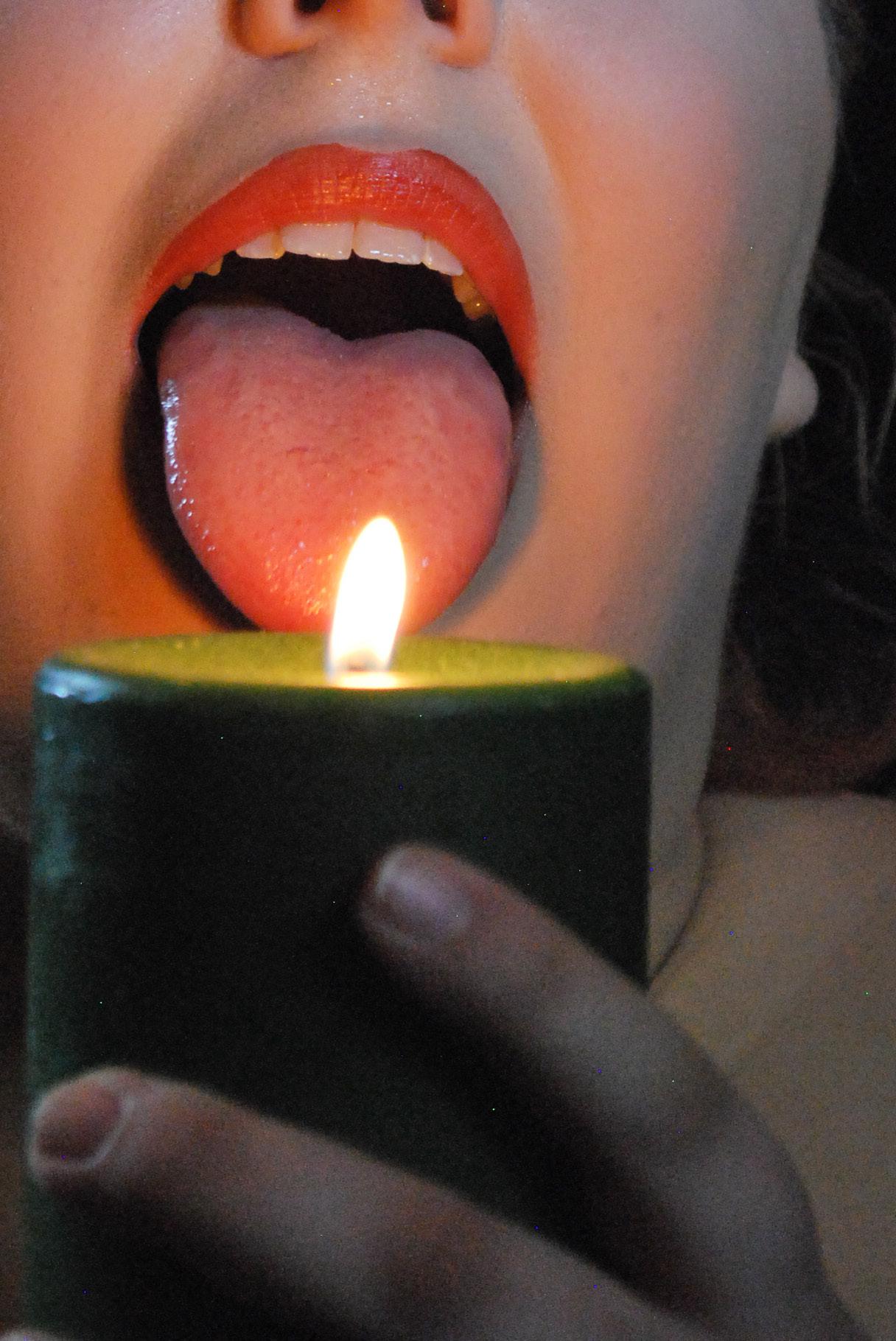
Identity
Expression
Communication Trust
Respect
Community
Consent
Learning
Discovery
Acceptance as you are.


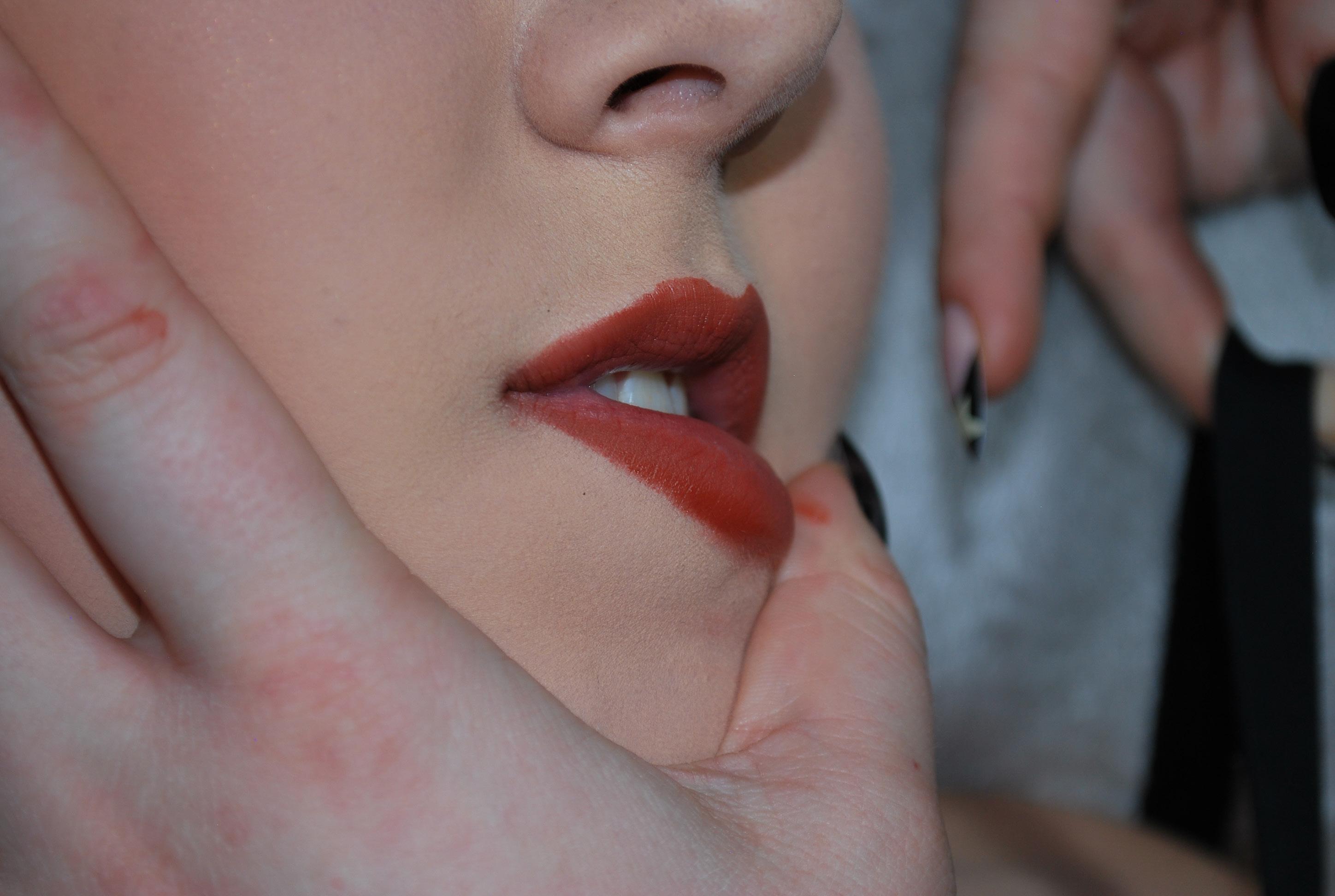
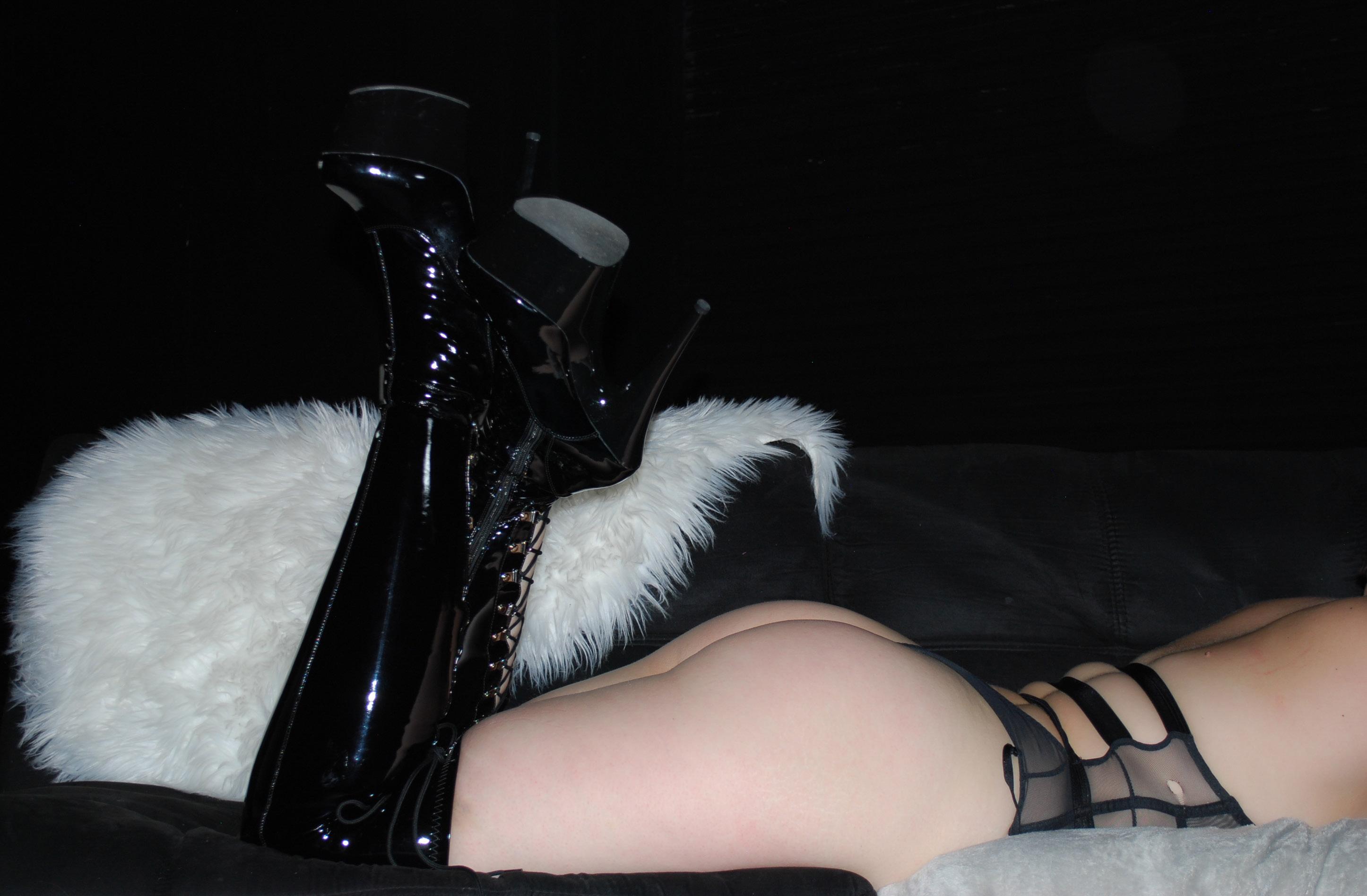
As molten bodies meld lovers sweat in summer heat unabashed, unafraid. trusting touches deep within bring blushing bliss to form. bound to bed by silken ribbon
frustrated hands seek wanton flesh
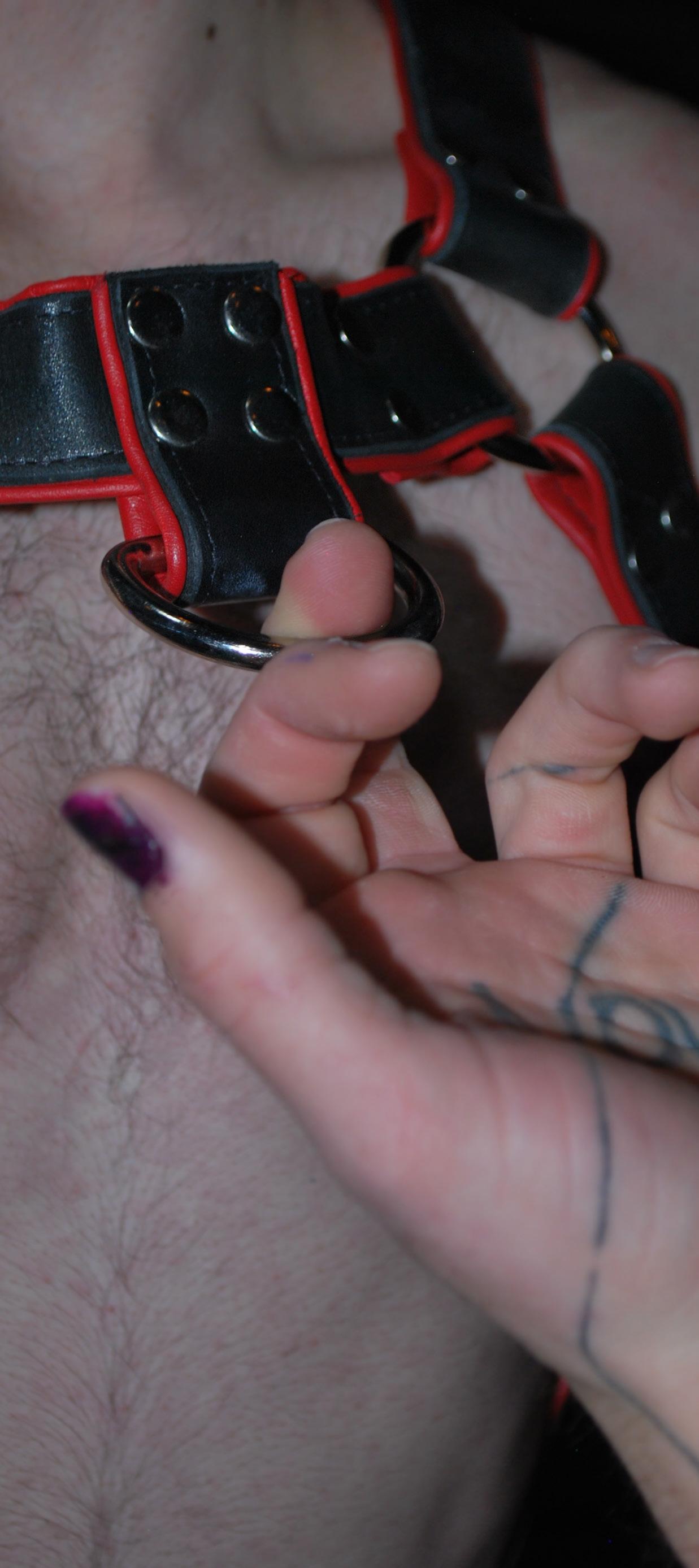
and hungered mouths fall silent.
As slap-stung and brazen I beg for more.
- Calpurina MockingbirdAt what point does one identify as a woman?
Is it a matter of appearance, is it in the folds, hair, and nails that make a woman? Is it the voice, bones, organs ? Is the whole of my identity reliant on the fact that I have a uterus, and therefore it’s permissable for me to use that title- woman? Must it be earned through my femininity ? What is Feminity?
Lili Torres-Nunez
Being around Lili Torres-Nunez, one gets the sense that she is grounded to the earth, strong. A wrestler, a dancer, a scholar, Torres-Nunez is a sophomore at Ohio Wesleyan University majoring in anthropology, zoology and psychology. Torres-Nunez believes her femininity is most defined by moments where she feels alive, where her confidence evolves and thrives. As a member of the majorette team, dance emboldens her femininity, “It is an energy,” TorresNunez said. Her voice is smooth, she sits with her spine straight. She simultaneously carries herself with poise and humility. The ability to embody one’s identity as a woman is just as complicated; spaces that have been branded as purely masculine make it difficult for women to participate. Particularly in the context of sports. “I was constantly being told that I didn’t belong there because I was a woman and wrestling is a masculine sport,” Torres-Nunez said, “Once I learned to ignore them, that’s when I truly felt my most feminine. I felt powerful, confident, and unstoppable.”
Taylor KingstonThe exclusion of women is a trend that manifests in all areas of life: in mathematics, in medicine, in art. Despite what seemed to be a progression in the inclusion of female artists, a study done by Artnet showed that in the 10-year gap between 2008 and 2018, work by women only made up 11 percent of pieces bought by America’s top museums. Taylor Kingston, head of the creative writing department at Stivers School for the Arts in Dayton, believes that this denial of space for femininity is a disservice to all genders. “Femininity and masculinity both are means of expressing one’s strength,” Kingston said. “I think it is healthy for women and men to have the flexibility to employ masculine and feminine tendencies when the occasion calls for it.”
A woman who exudes an air of spiritual métier, for Kingston, it is the connection with her mother and sisters that makes her feel like a woman. The qualities she associates with femininity – vulnerability, humility, the capacity to be strong in passivity – are reinforced in tender and enlightening moments of conversation. “Together, we talk about matters of family, problem-solving, philosophy, and love, and they strengthen my ability to be a feminine force.” Being comfortable in one’s femininity is no easy feat, but Kingston encourages us to “find inner strength,” through the capacity to keep “a sense of calm,” to endure the difficulties of life, whether physical or mental. Women as a whole, it seems, have an innate ability to connect.

Femininity for Dua is constrictive, rather than expanding. A freshman at OWU, Aasim is a trenchant academic who fully finds herself when writing, “Writing lets me breed an intimacy with myself…to abandon the corporeal form, the boundaries of which my experience as a woman is otherwise confined within, and see myself as more.”
She feels that the traits typically associated with femininity are a “well of restraint that never stops giving.” It is a burden rather than something that emboldens her; she feels it reflects the desires and expectations of men on women in society. Rather than reflecting honestly on who a woman can be.
To her, being a woman is “the antithesis of femininity.” It is not pretty, not tender, it is unflinching; the concepts intertwine but have never been synonymous. It is the patriarchal standards for women that pushes Aasim away from traditional femininity, and the various ways that women are limited as a result. She specifically cites how deeply conjoined her identities as a woman and a lesbian are.
“I think most lesbians experience…an alienation from womanhood…there’s something liberating about being able to lean into that fear and discomfort.”
 Josie Green
Josie Green
Josie, another OWU sophomore and English major with a concentration in Literature and a minor in communications, agrees. For her, femininity is embodied in her love for makeup, of “dolling” herself up and embracing the parts of herself that make her feel in touch with her identity as a woman. But she recognizes that her personal relationship to femininity is not representative of women as a whole. “I think there are many ways to define femininity, which, in a backward sense, almost makes femininity undefinable.”
Importantly, she also acknowledges the ways in which modern feminism has restricted power from women rather than granting it. “Intersectionality needs to be a greater focus. Not all women go through the same life experiences, and the current state of feminism very much focuses on the white narrative,” Green said. “Feminists must learn to consistently uplift intersectionality and understand that race, disabilities and social/economic status mix with gender to create different life experiences and disadvantages for everyone.”
Regardless of gender, femininity can be harnessed by anyone to make them feel whole in their identity. It is clear that the understanding of femininity is not universal, nor should it be reduced to only include women with uteruses. Feminism and its relationship to femininity should be one that envelops all female presenting people: women of color, trans women, lesbians. There is a shared understanding of the strains women are put through that helps bring us together. If utilized to bring balance to feminism, perhaps there can be a world where femininity can exist as a spectrum of expression, available for all people in our society; not as a tool to condense us.
Although purchasing vegan leather might seem like a more sustainable option compared to genuine leather goods, consumers should consider the pros and cons of purchasing both types of leather.
Vegan leather comes from either polyurethane or polyvinyl chloride, two types of synthetic polymer, a type of plastic. This provides an alternative to mass producing genuine leather goods, lowering the amount of carbon produced by not using live animals and making faux leather goods available at a more affordable price. However, the increasing popularity of vegan leather has created some environmental drawbacks as well.
The plastics that make vegan leather take decades to decompose, yet the product itself is less durable than genuine leather. Vegan leather rips easily, meaning that vegan leather products will not last as long as their genuine leather counterparts.
Seeking secondhand leather goods provides the most high-quality and the most sustainable leather option. The quality of faux leather does vary, though, as some vegan leathers are mass produced and rip easily, while other brands take time to research and develop premium leather alternatives that are on par with genuine leather without the negative environmental impact.
Additionally, brands who use low-quality vegan leather often engage in greenwashing by highlighting their use of vegan leather without actually recognizing the environmental impacts of using faux leather or their larger effect on fashion pollution.
Consumers should remain conscious of supporting greenwashed brands, and recognize that cheap, mass- produced vegan leather does not always provide the most sustainable alternative.

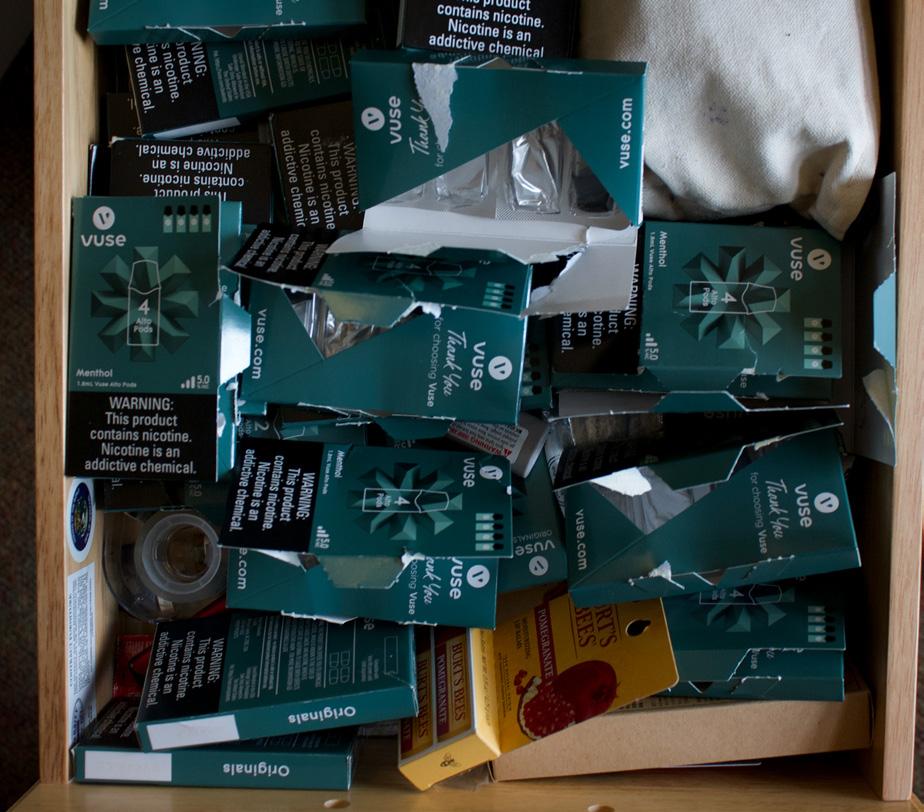
Drawers come in all shapes and sizes, so does the junk we put in them. Some have one designated junk drawer, others like one fine arts student has multiple: “I’m a fine arts major, every drawer is a junk drawer!" They are vessels for unwanted or forgotten items that may have had a use at one time, what the owner thinks might have a use in the future, or simply a culmination of essentials and non-essentials. They also can hold what we humans most often accumulate – things. This drawer is indeed a reflection of one’s mind, perhaps a wandering mind. I checked out the drawers of five college students of different majors to see if their interests had any connection to what was in their junk drawers.
The students include two fine arts majors, a biologist, historian, mathematician, and writer/ filmmaker. Will we be able to tell their junk drawers apart?
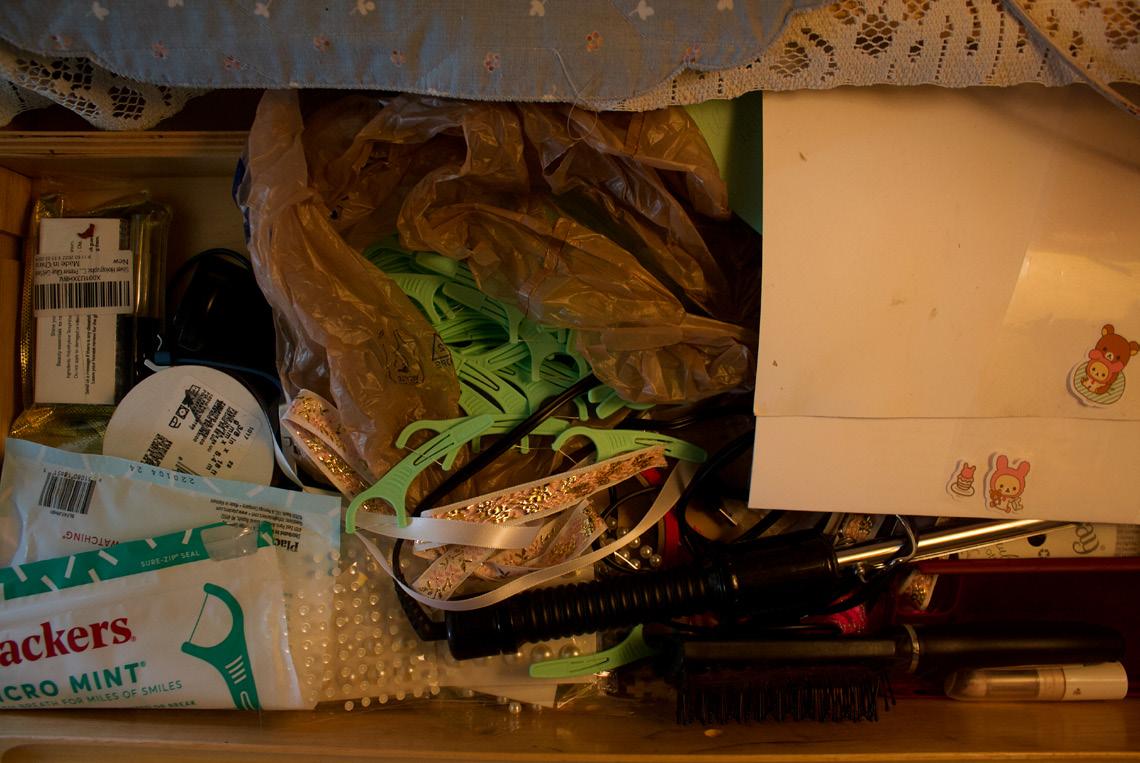
A junk drawer provides some semblance of comfort, where one goes to find answers, or maybe it is not that deep, but rather the drawer owner knows that their favorite tool or product is probably hiding in there, or maybe they’re hiding it from someone.

Surely all objects have some sentimental value, even those that we push aside and we find have occupied drawers. These objects have had some use in our lives at some point, and they have accumulated at different moments. What is junk to one person might have special meaning to another. Thus the junk drawer can be a time capsule of one’s life.


Meet Jesamie Houghtby: A 26-year- old fashion designer based in Columbus, Ohio, with a passion for the eclectic, goth and extraordinary. Jesamie graduated as valedictorian from Columbus College of Art and Design (2021) and has since launched his career in fashion design.
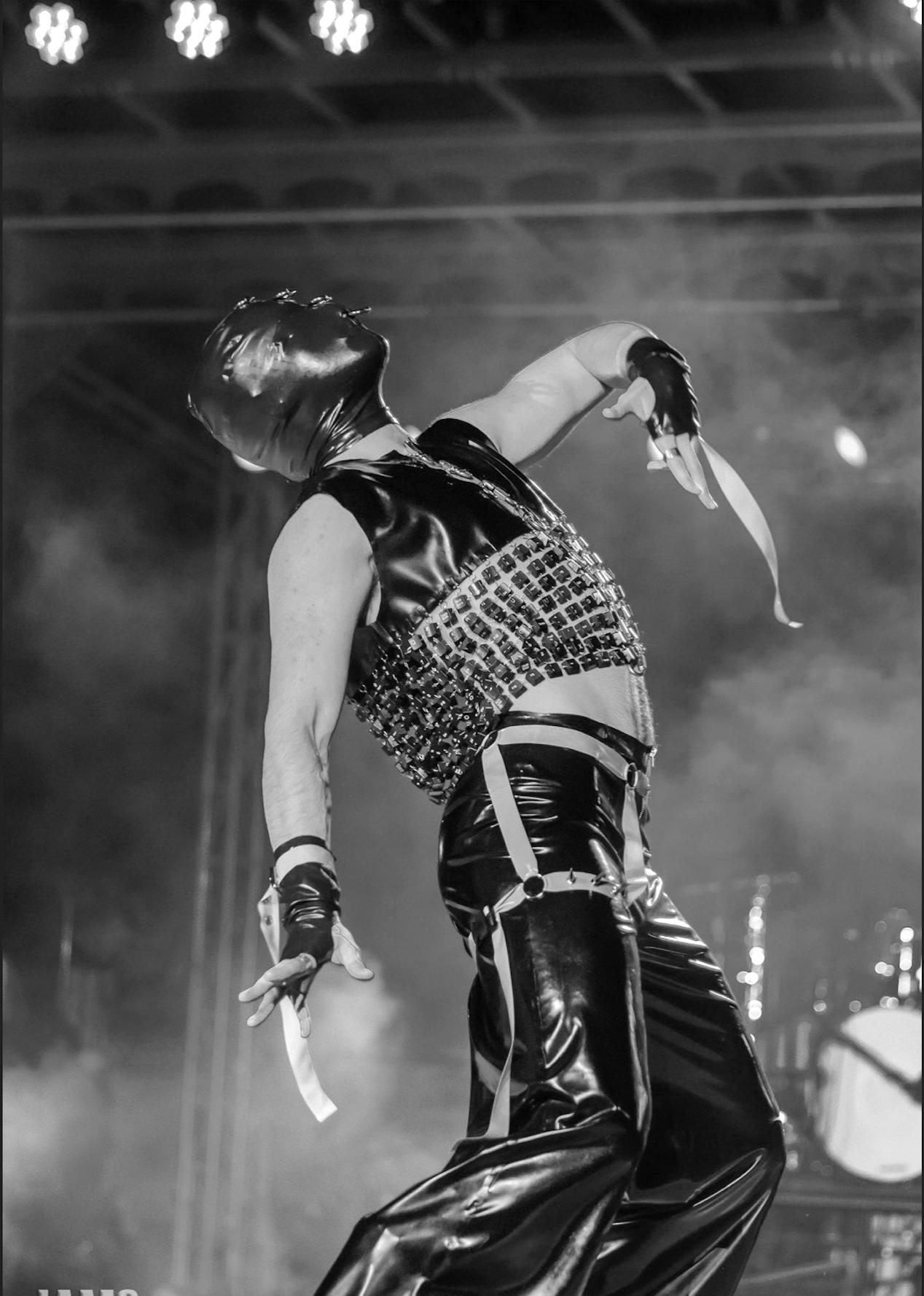
One of his recent major accomplishments in October 2022 featured his collection, “MetaTerrestrial,” at the HighBall Runway Show in downtown Columbus. HighBall is a Halloween-inspired costume competition which hundreds of people attend annually. This competitive event features designers from all across Ohio. On this runway, they showcase months
of their hard work and display unique manifestations of their passion and craft that may not have a place in typical fashion settings. Drawing from inspiration of the human relationship with the ever shifting technological age towards an increasingly digital era, “MetaTerrestrial” was created.
Houghtby describes his collection:
“MetaTerrestrial is all about the inevitability of our future to merge into ever-more technological creatures. When do we become so intertwined with the digital world we have created? When will we become indistinguishable from our technologies? As the metaverse becomes more and more obscure and part of our everyday lives, who’s to say we’ll be the only ones there? Is it true we’re the only ones out there? Will we become something new? Will something new find us?”
To represent the seemingly inhuman majority of inhabitants in our new metaverse, Houghtby was inspired to reflect the dissociation of self and humanity with his medium: latex. With every part of each garment made entirely from latex, all the way from full mask head coverings to toe with latex sock garters, Houghtby removed the identity of his models that presented a juxtaposition of both unity and disconnection.
Houghtby appreciates when things are more than what meets the eye. He reflects, ‘My collection uses latex, which is a very specialized craft and niche material that differs from any other form of clothing creation. Latex appeals to me because although it appears synthetic, it is made from a natural material. I am obsessed with that concept.”
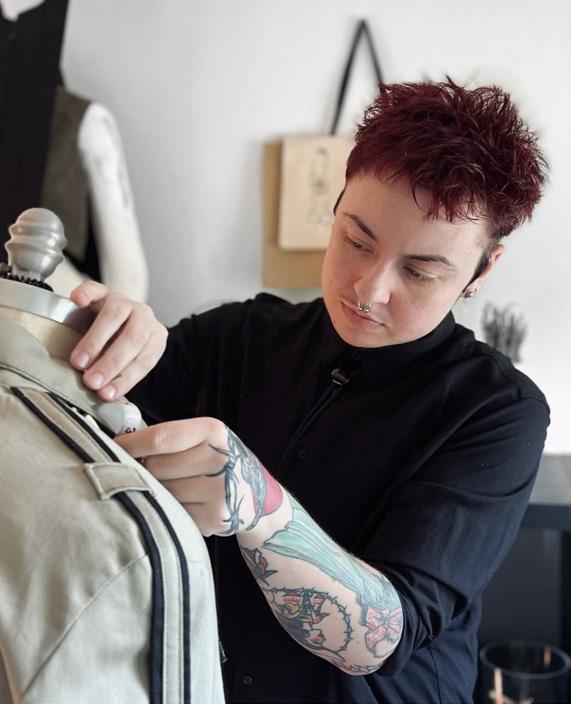
Now that we’ve recognized the final product, let’s rewind. What does it take to work on a project like this? What did the process of conceptualization to completion look like?
Houghtby started preparations for his HighBall collection in August of 2022; soon after, it essentially became a second job. With a dedication of time like this, Houghtby had to make many sacrifices to put the work in and do it right. He recounts, “I remember I had to say no to hanging out with friends all the time, unless they wanted to come over while I worked. It’s the busiest I’ve ever been.”
Houghtby's muse for this collection was music. While music itself has the power to evoke a human response, it is up to the artist to use that response towards inspiration to create even more. There is a unity within all the artistic forms, it is a frequency that drives all artists to express themselves in the medium that is most authentic to them.
In jazz music, soloists often replicate licks of another soloist’s melody as if going back and forth in conversation. For Houghtby, he is forwarding the conversation initiated by Drab Majesty.
So, when asked where the origin of his inspiration came from, Houghtby responded, “I was listening to Drab Majesty’s “The Demonstration’’ and was so inspired by the dreamy melodies, the haunting vocals, and the story of the album that I started flooding with ideas. I can see
in my head when I am listening to music, so I translate those to inspiration in a more tangible way, which leads eventually to my final designs.”
The ethereal look and feel of latex embodied the otherworldly presence that Houghtby was striving to portray and mirrored the feeling of the melodies, vocals, and story of Drab Majesty’s work. Just like, “The Demonstration,” latex itself is a rebellion. Houghtby reflects, “In the industry, I think a lot of times people associate a wow-factor with synthetic materials and see natural fibers and materials as rather bland. Latex defies that.” Drab Majesty’s music embodies the presence of historically culturally defiant goth and punk counterculture.


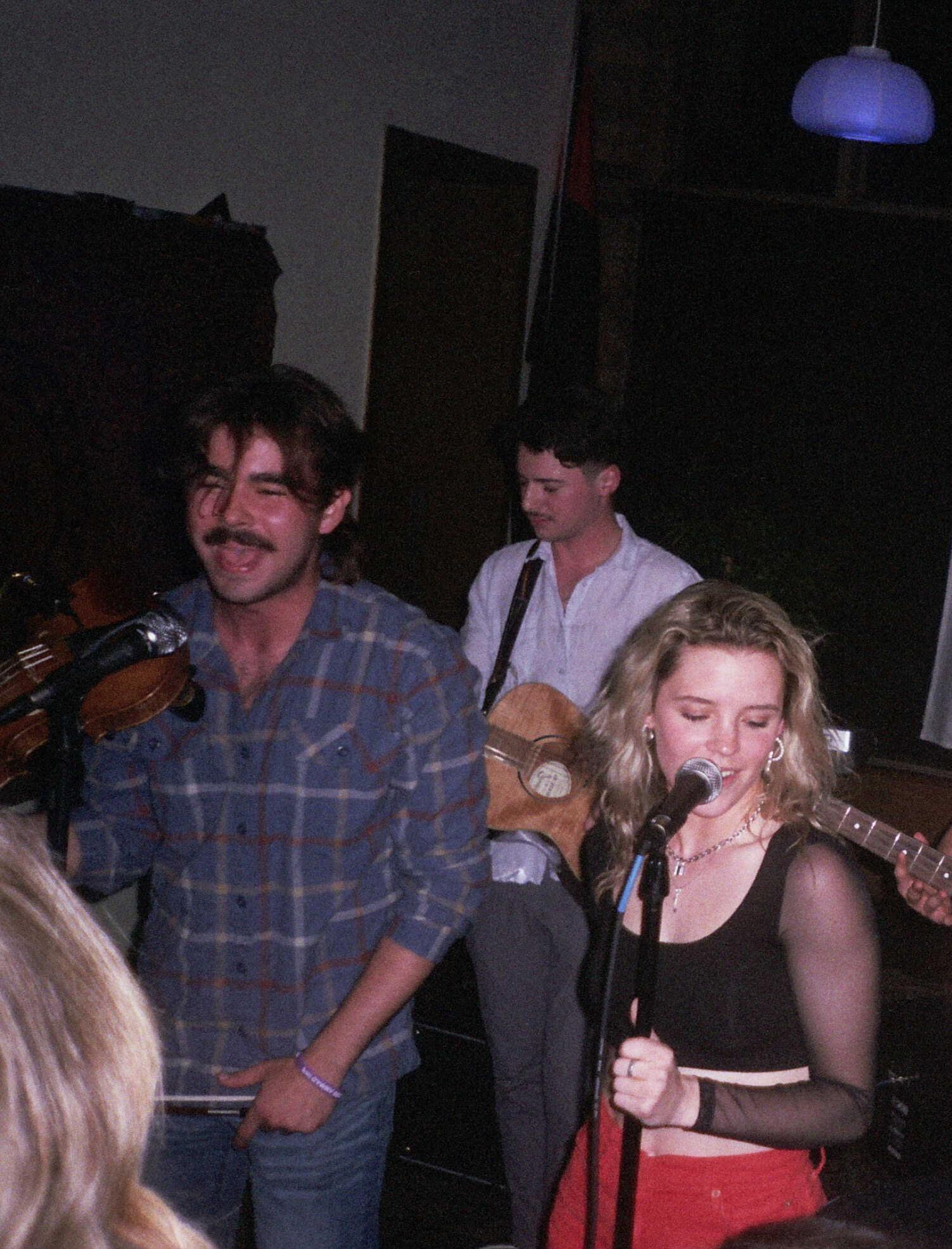
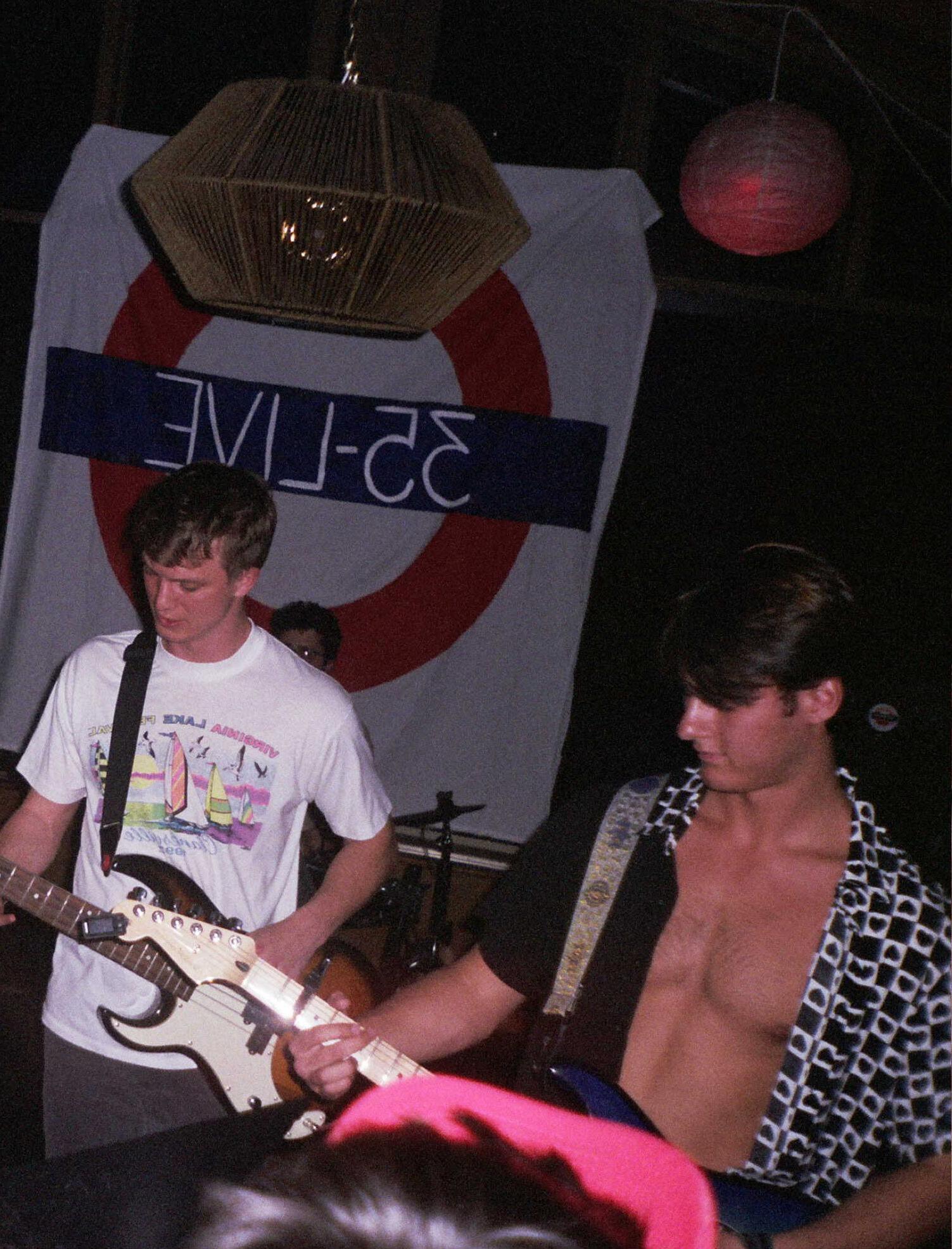
What started as an expose on experimentation and party culture in college turned into a love letter to the messy thing that is the American college experience.
Inspired by the photography of Nan Goldin, much of whose works focuses on moments of intimacy, I originally wanted to create a photo series that showcased partying and (light) drug use in college but in a way that de-stigmatizes this right of passage.
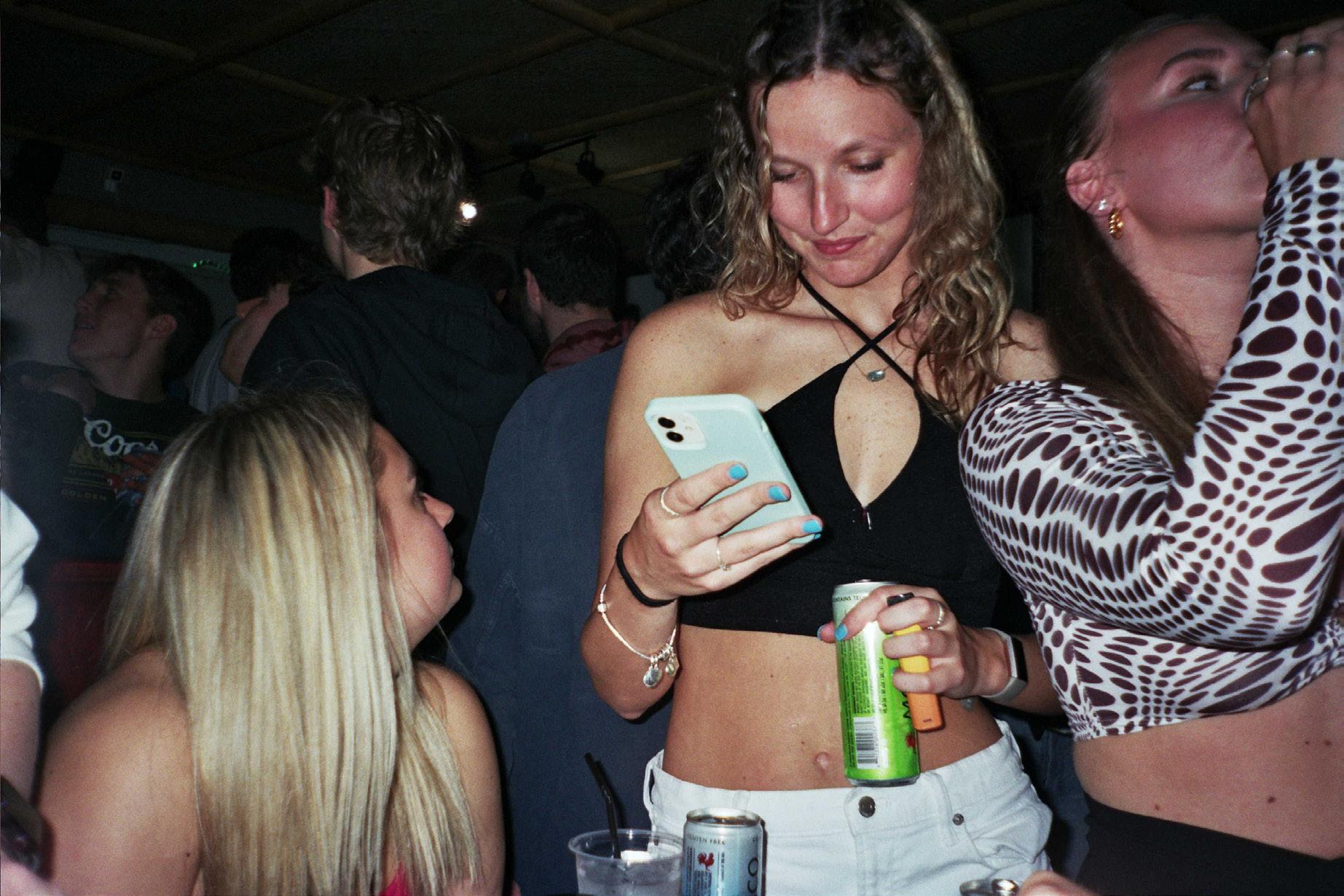
But, when I saw the photos I had taken, I found that this wasn’t the narrative they were telling.
Small-town American college is a unique experience. We, as young adults, are expected to figure out, at the young ages of 18 to 22, who we are and what we want to do with the rest of our lives. At the same time, we live in a relatively confined environment with the same people for four years and are extending ourselves 24 hours a day with classes, jobs, extracurriculars and intense social lives.
I looked at the photos and saw my peers and friends, simultaneously exhausted, lost and devil-may-care as we try to navigate this confusing and stressful time of our lives.
As a senior I reflect back on the past four years and I see all of its highs and lows in full view. College can be the best time of your life, the worst time of your life, somewhere in the middle, or all of the above, sometimes at the same time.
This photo series is to me and hopefully to those who view it, a series of still moments that do their best to capture what this experience has been to all of us and that figuring it out along the way is totally okay.
All people pictured with substances are of legal ageCover Spread: 35 Live at Chi Phi House
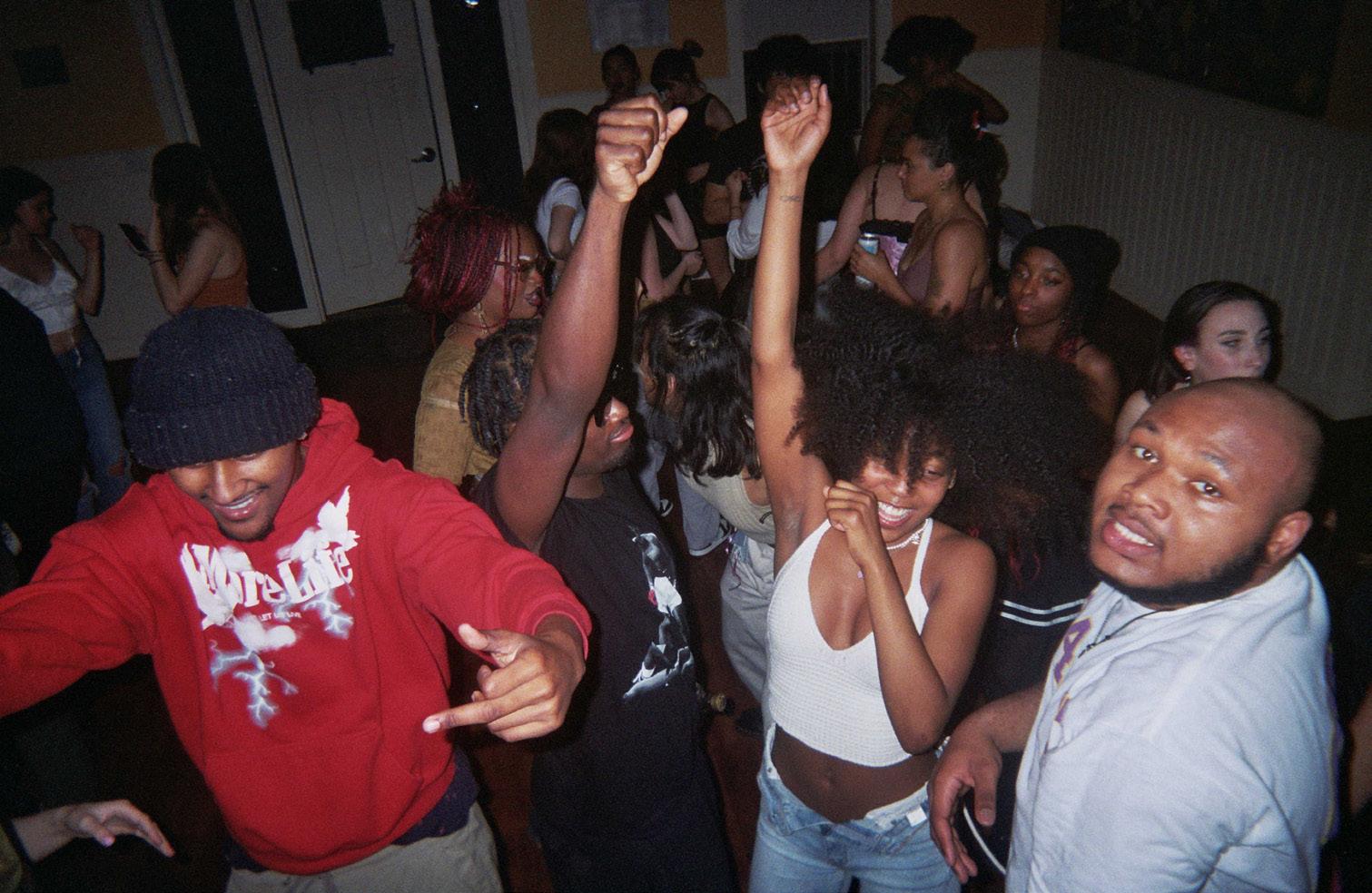
Previous Page: Nights at local Saloon
This page: Above: House Party
Below: Group Nap
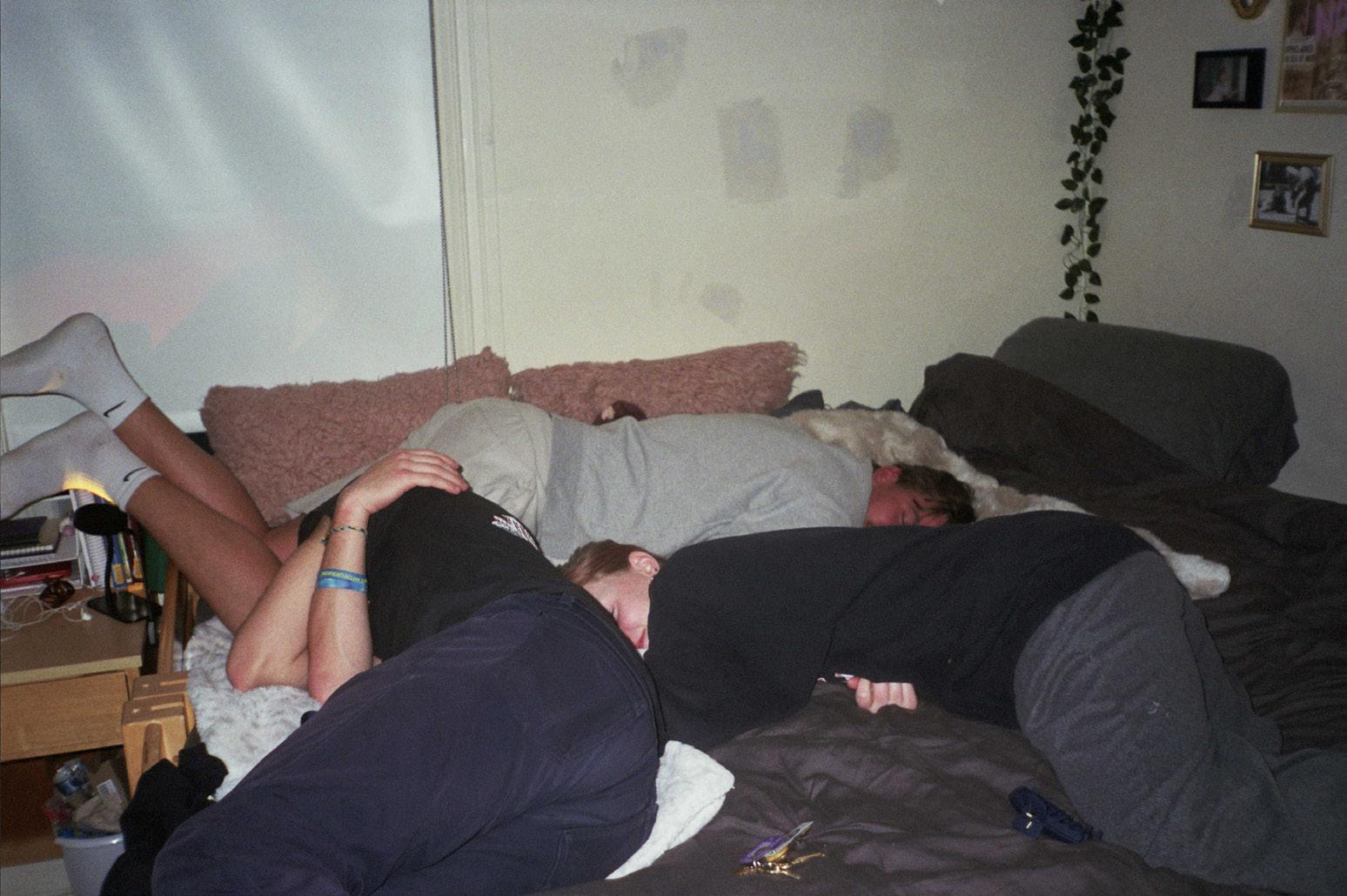
kids ARE alright the kids ARE alright kids ARE alright the kids ARE alright the kids ARE alright the kids ARE alright the kids ARE alright the kids ARE alright the kids ARE alirght the kids ARE alright the kids ARE alright the kids ARE alright the kids ARE alright the kids ARE alirght the kids ARE alright the kids ARE alrigght the kids ARE alirght the kids ARE alirght the kids ARE alright the kids ARE alright the kids ARE alright the kids ARE alright the kids ARE alright the kids ARE alright he kids ARE alright the kids ARE alright the kids ARE alright the kids ARE alright the kids ARE alright the kids ARE alirght the kids ARE alright the kids ARE alright the alright the alirght the kids
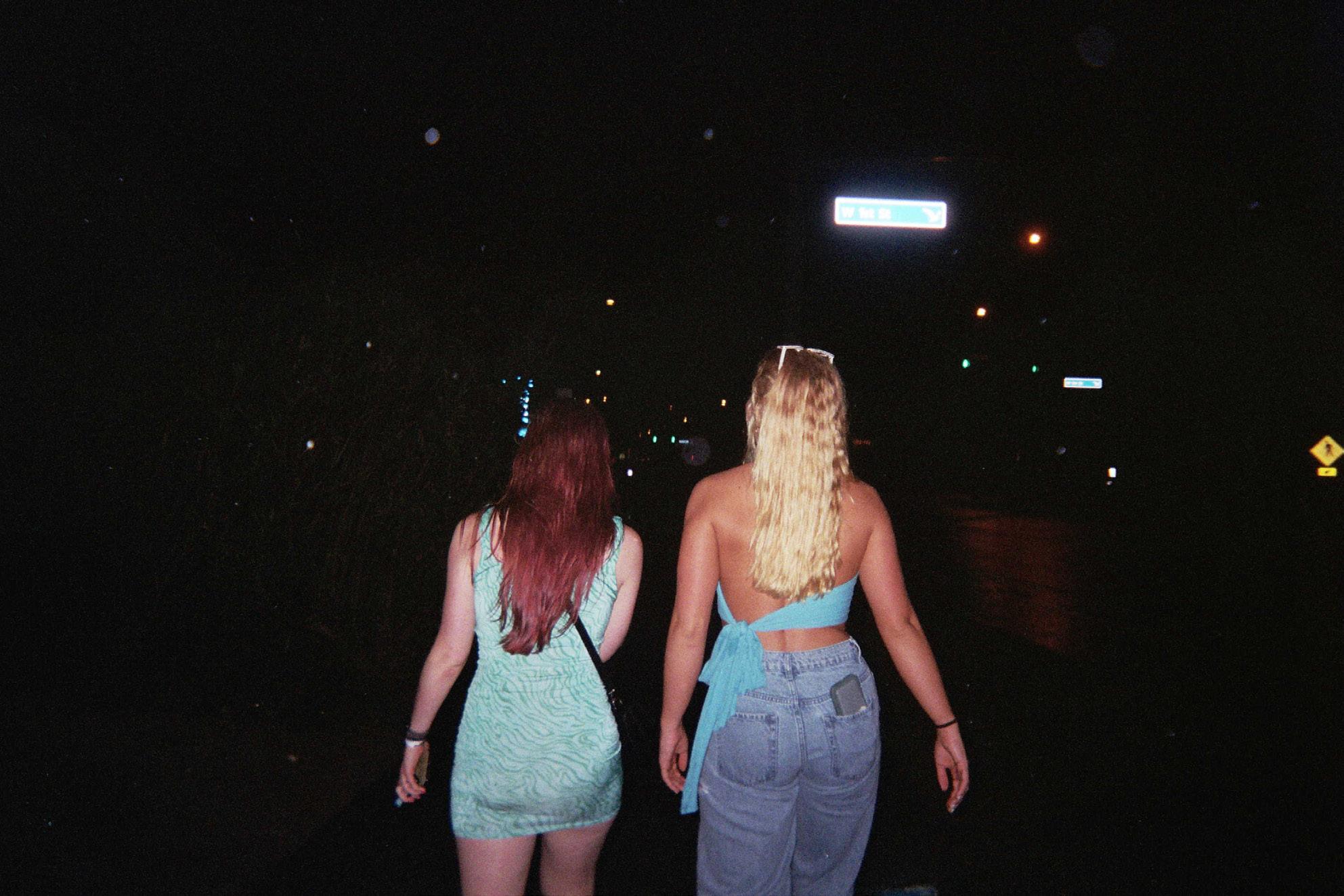

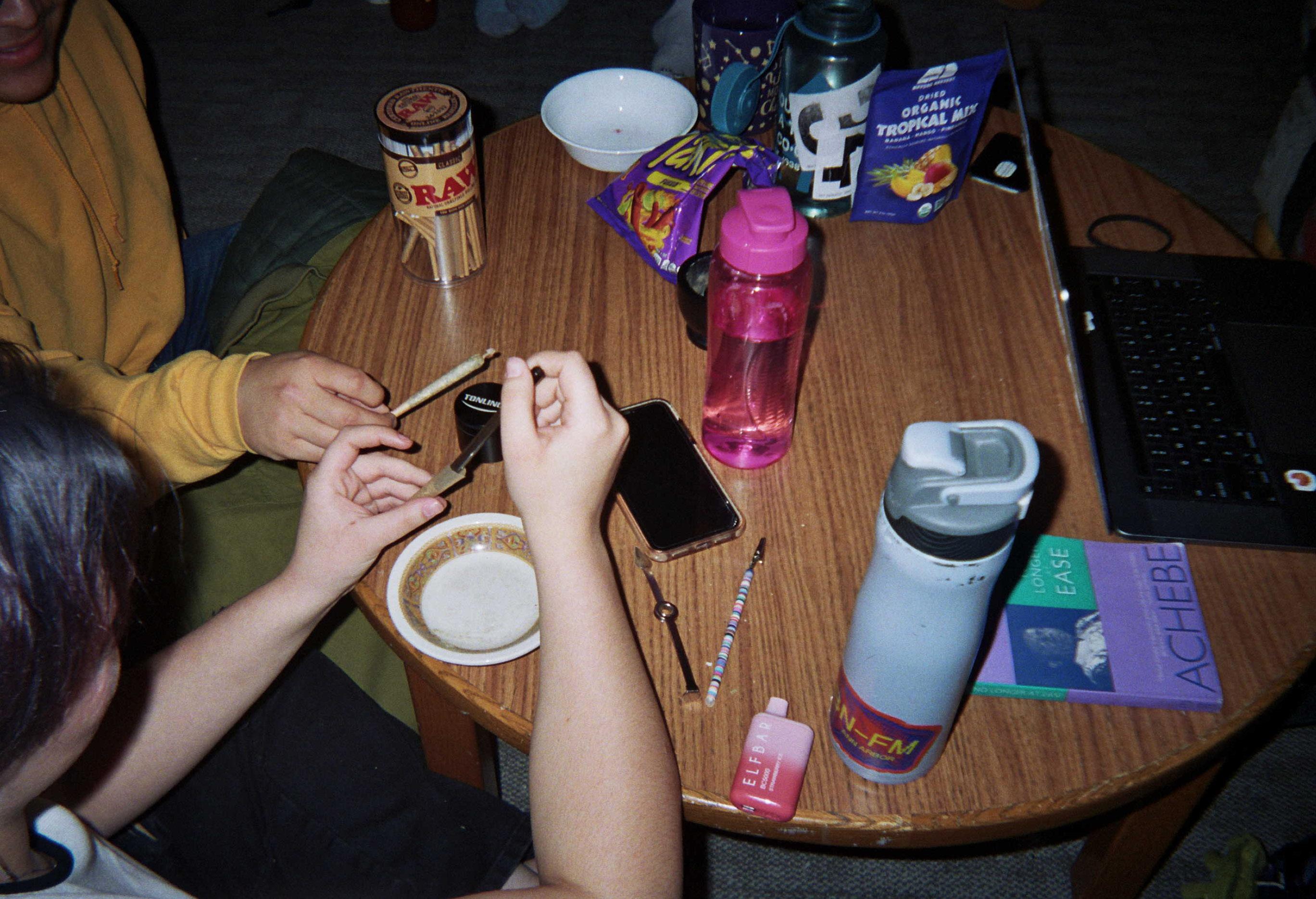
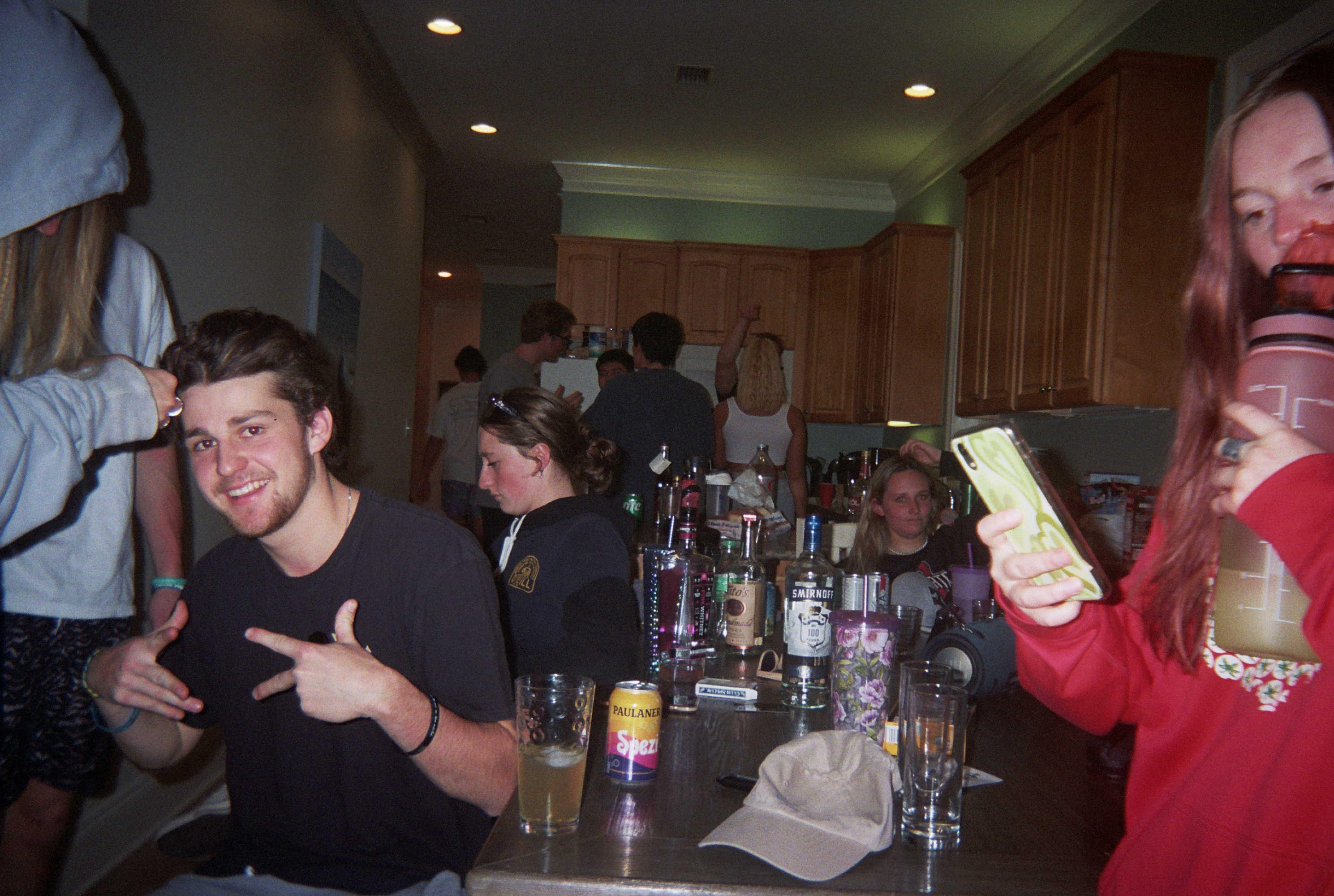
Ths Page: Above: Pre Mixer Calm
Below: Tired Alison
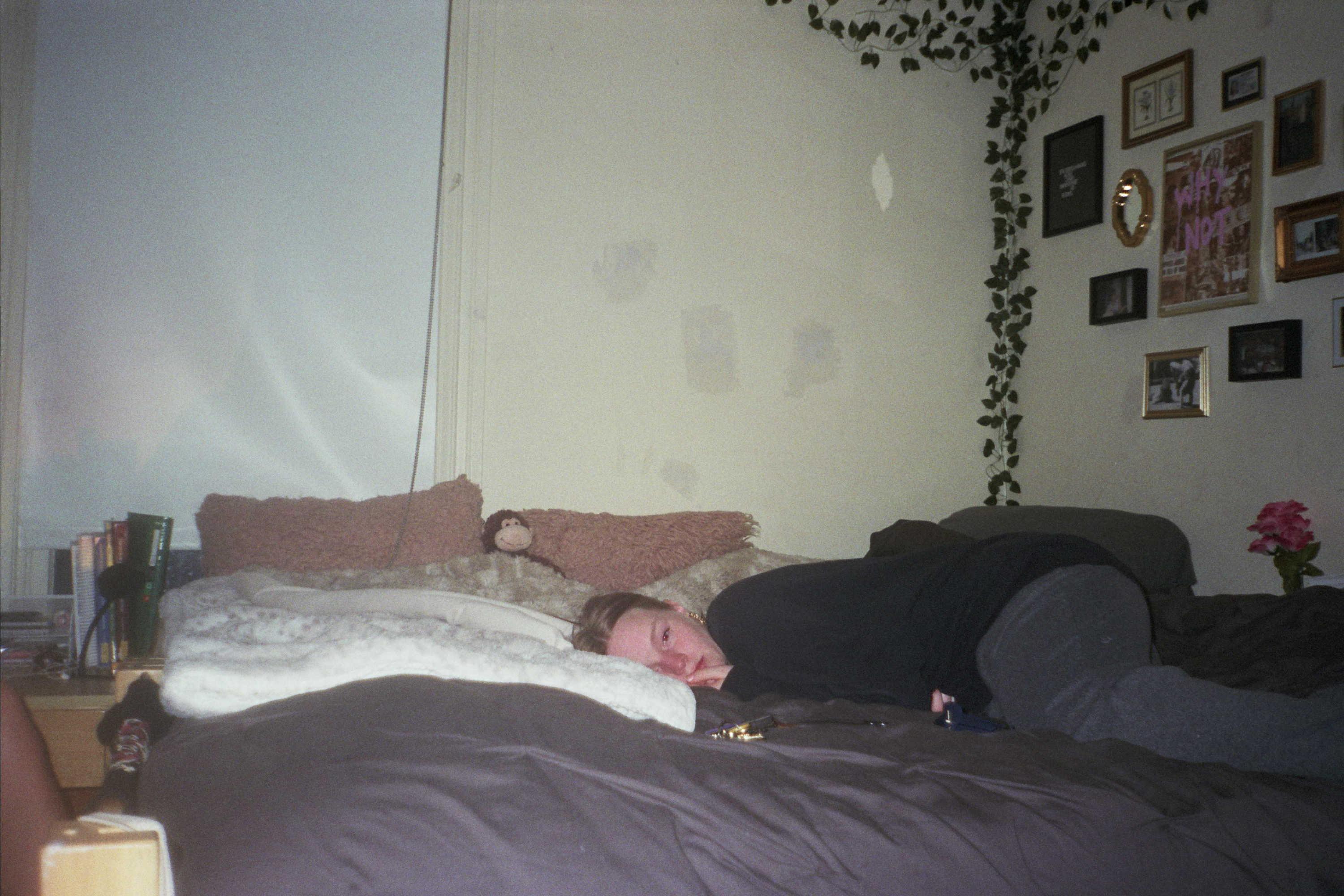
Left Page: Above: Spring Breakers, Evening Activities
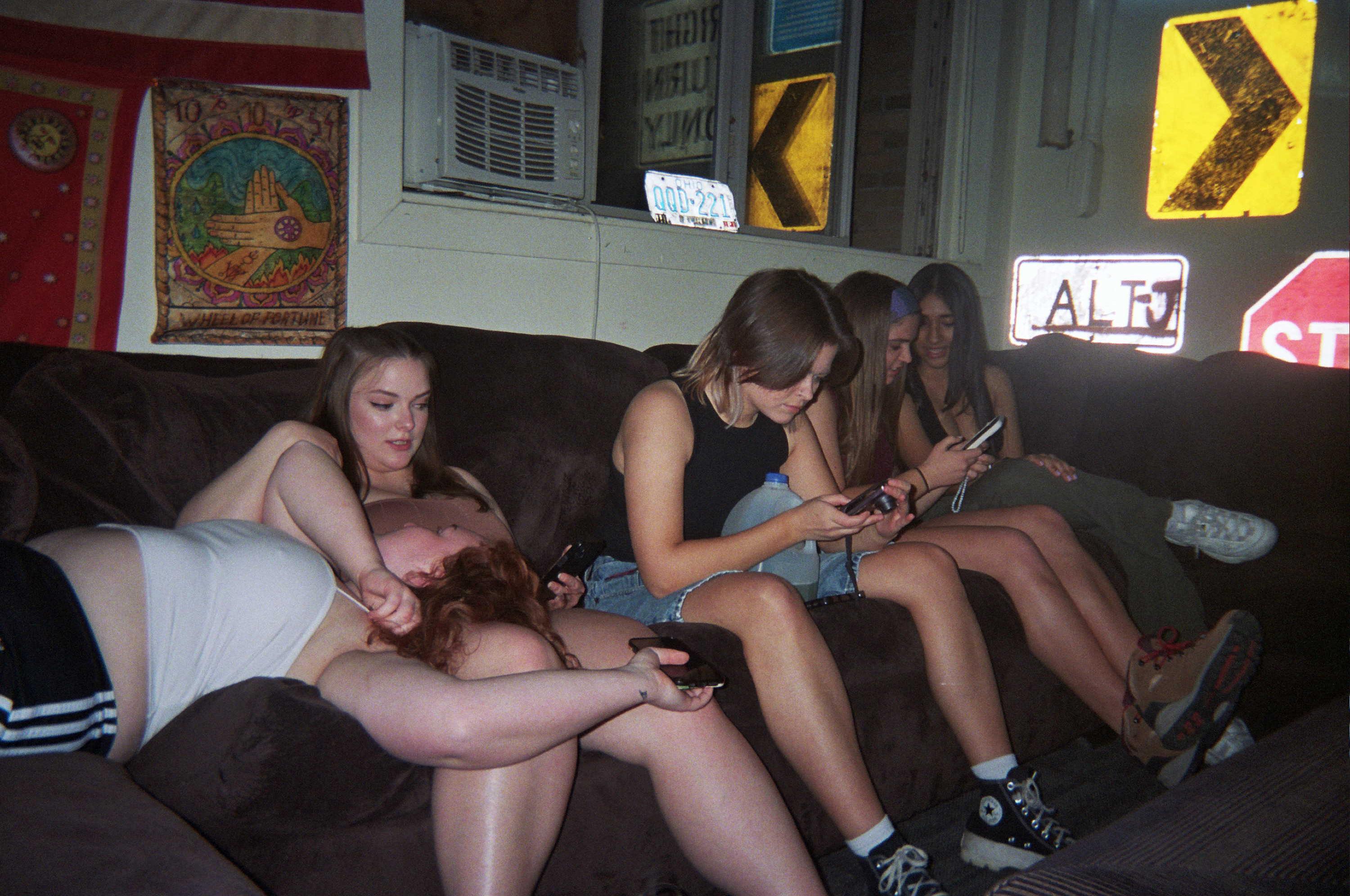
When I was a little kid, my family and some of our close friends would go camping on an island by Lake Erie. I loved exploring the campsites, rocky coastlines, pre-industrial-revolution ruins, and forests.
But, my favorite place was always the horseshoe quarry. The quarry is surrounded by a short loop trail, where there is a hidden path down to a stretch of rocky land jetting into the lake. I always felt strangely connected to this quarry, almost feeling like I could feel the energy of the place ebbing and flowing.
I have never been able to express this feeling of connection and appreciation for this small piece of land. But, during a research project for my high school art class, I stumbled upon English sculptor and photographer Andy Goldsworthy.
Born in Scotland in 1956, he creates site-specific pieces and land art in both rural and urban settings that are intended to highlight the endemic character of a specific place.
Goldsworthy works with nature to build sculptures ranging from monumental arches to dandelion fences. These works are not meant to last forever. The pieces are not designed to be a piece of art on the land or at a place, but to work with the surrounding land and nature in order to make the viewer look at the landscape anew.
In his works set in Dumfriesshire, Scotland, Goldsworthy utilizes sheep’s wool to highlight the artificial shape and movement of the landscape. Scotland has more sheep than people, making sheep an iconic part of Scottish culture and agriculture.
Goldsworthy shows in his Dumfriesshire installations how sheep are an integral part of the land. In an untitled installation, Goldsworthy used wool to line a path made from sheep walking over and over. In another, he draws the path of a waterfall near the Dumfriesshire sheep farm with their wool.
The wool used in these pieces is collected on-site, which shows the relationship between the animal and the land. Every day, sheep are led by a shepherd to and from pastures in order to produce wool for humans to use. As a result, the sheep shape the landscape as they repeatedly walk the same path. By using wool to outline the sheep’s path, Goldsworthy shows the relationship between humans and nature through the lens of agriculture.
Goldsworthy’s lining of the waterfall path can be interpreted as highlighting how waterfalls are shaped by years of erosion, similar to how the land is changed by years of livestock agriculture. The sheep drink water from this part of the land, and when they create waste or die and are buried, parts of
them seep into the land and the water, part of the cycle of death and rebirth seen in nature. Agriculture is the art of shaping and working with nature in order to efficiently provide humans with the raw materials necessary for survival.
Since the beginning of the practice, humans have selectively tamed and bred animals to produce food, textiles, transportation, tools`16 and more. We have singlehandedly changed and created entire species of domestic animals for our own benefit.
As shepherds nurture, guide and shear their sheep to produce wool for sweaters, bedding, carpets, and other textiles, they are changing and molding the land around them. We have transformed, and continue to form nature, which is not always a bad thing, as long as we are responsible about it.
Goldworthy’s art takes note of this. His body of work doesn’t just labor with nature, it’s made of it. He does not bring materials from other locations to the one he is working in; he only uses materials found at the site. He intentionally leaves most of his art impermanent and at the will of nature to change with its processes. Still, they’re also not meant to be destroyed. He frequently describes his works as “ephemeral.”
In an interview with The Herald of Scotland, Goldsworthy invites journalist Teddy Jamison to walk around his property and a neighboring farm, where he shows Jamison a work consisting of ferns on a fallen tree. While he is pleased to see that the work is still intact, Goldsworthy embraces the inevitability and positive aspects of change in his works.
At the beginning of his career, Goldsworthy recalls that there was a negative light surrounding any human involvement with the landscape. Specifically, a notion that humans taint whatever they touch in the natural world. Goldsworthy continues in The Herald interview: “We can leave the place richer for our being here. Ultimately the big danger is we don’t see ourselves as nature.”
We are not separate from the natural world, we are an essential part of it, as every other species on the planet is.

Deep in the desert of Nevada, miles from any sign of civilization, lies the Yucca Mountain Nuclear Waste Repository–a fortress containing nuclear waste that will remain deadly for 10,000 years.
But after constructing the repository, scientists were faced with a new problem. Society will look completely unrecognizable in 10,000 years, so how can we keep people away from this deadly nuclear bunker for such a long period of time?
The solution: nuclear folklore.
Scientists studied patterns of human behavior that have lasted through centuries and eventually generated an absurd set of synthetic folklore to keep future generations away from the repository. First, they considered how humans have kept cats as pets for thousands of years, and began working to genetically engineer cats to glow and change colors near a deadly amount of nuclear waste. The unnatural behavior should communicate to future generations that something in the area is not safe, and that they should leave immediately.
However, to further cement this idea, the folk musician known as Emperor X created a song titled “10,000-Year Earworm to Discourage Settlement Near Nuclear Waste Repositories.” The song discusses the dangers of color-changing kitties, and warns future people to vacate the area as soon as their cats change color.
This specific set of synthesized folklore should ensure that people will stay away from the Yucca Mountains and other nuclear waste repositories until the waste has sufficiently decayed.
Top sellers, or verified users, can make Depop their primary source of income by listing large quantities of trendy clothes, often sourced from secondhand stores or consignment shops. Depop advertises that these sellers can earn thousands of dollars on sales every month, so this sounds like the perfect job for any young vintage fashion connoisseur. However, Depop users who operate with this business model have been criticized for exploiting a resource needed by income-insecure people in their communities.
In an attempt to not contribute to fast fashion, young people have turned to apps like Depop for repurposing old articles of clothing that they no longer wear. Its design interface with similarities to Instagram and Pinterest makes the platform easy for Gen-Z to understand, and Depop sellers can make a small profit by listing their old clothes. However, some users have taken this to the next level.
Critics have observed how top sellers who source the majority of their products from thrift stores are taking from a resource needed by income-insecure members of their community. Depop sellers are notorious for clearing out the most trendy, high-quality pieces of clothing and leaving behind substandard clothing that will likely end up in a landfill.
84% of clothes donated to consignment stores end up in landfills or incinerators.
Sellers respond that thrift stores are a resource available to everyone, and the statistics are on their side. According to the Environmental Protection Agency, 84% of clothes donated to consignment stores end up in landfills or incinerators.
But one must also consider how Depop sellers affect the quality of clothes left at thrift shops.
You can always tell when a Depop seller has visited or lives near a thrift store because that location will have a noticeably lower quality of selections over the average store. Specifically, thrift stores struggle to keep winter coats in stock, so people who can afford to purchase a coat should never source it from a thrift store because second-hand stores often run out of quality winter clothing that incomeinsecure people need to survive the winter. Thrift shops also often struggle to keep undergarments like bras in stock, so resellers who sell lingerie should avoid sourcing their clothes
from consignment stores as well.
To avoid draining one thrift store of materials, Depop sellers should try to visit multiple thrift stores in their area. By doing so, sellers will not only benefit from having a larger variety of clothes to list, they will find enough clothes so that they do not decimate the inventory of one single store. More often than not, Depop sellers use their profits from the site as supplemental income, meaning that the vast majority of sellers have the time and disposable income available to drive and source their products from multiple stores, while low income people might only be able to visit the store closest to them.
sellers need to make an average of £15 (approximately $15) on every sale each month.
Even if a seller does the right thing and sources their clothes from a variety of stores, they can still come under fire for another common criticism: price gouging. Defined by sellers who inflate the price of their clothes as much as possible, a lot of verified sellers have been accused of price gouging because it is not
uncommon to see a piece of clothing listed for over $20 when the seller acquired it from a thrift store for only a few dollars.
Sellers can justify this because Depop’s policies pressure sellers to keep their prices high. The Depop website states that, to maintain their verified status, sellers need to make an average of £15 (approximately $15) on every sale each month.
They also often pay for express shipping so that they receive a higher seller rating, as they need to retain at least a 4.5 seller rating.
When shopping on Depop, users should keep in mind that sellers do not always have their best interests at heart. Because sellers can easily gouge prices and exploit a resource intended to help low income people, it’s important to always critically examine the business practices of every individual seller before making a purchase.
Everybody wants the latest in fashion at a cheap price.
As a result, “fast fashion” companies have sprung up to meet that need. These clothing companies jump on style trends to produce clothes as quickly and cheaply as possible.
For example, clothing company Zara has become one of the biggest names in fast fashion. Forbes magazine reported in 2018 that the brand delivers new designs twice a week, creating more than 10,000 designs annually.
It’s a recipe for an environmental nightmare.
The United Nations cites the fashion industry as responsible for approximately 10% of global carbon emissions. As of 2022, Zara, H&M and Forever 21 rank first, second and third in terms of pollution, according to Earth.org.
Highly automated factories and rapid production schedules prioritize consumption and trendiness over creating timeless, high-quality pieces, plus the chemicals used in production also contribute to the environmental impact..
Zara has said it will use more eco-friendly materials, intending to reach net zero carbon emissions by 2040, but there is a way to go.
However, there are alternatives. Some fashionistas are increasingly turning to secondhand shopping to stay stylish and eco-friendly.
local shopping options see page 41
Photographer Brandon Stanton has a way of making even the biggest cities feel like a small town with his visual storytelling. And, that's what he's done since 2010 with his photo block, "Humans of New York (@ humansofnewyork.)
Inspired by this gesture of getting to know individuals, I decided to engage in conversations with residents of Delaware, Ohio, to see if we could do the same thing: paint a portrait of a community through photography.
Founded in 1808, Delaware is one of the more than 250 incorporated cities in Ohio and is the birthplace of Rutherford B. Hayes, the 19th U.S. President. Delaware has over 41,000 residents, according to the 2020 U.S. census. The city is known for its charming downtown, which includes the Strand Theatre, established in 1916 and one of the 10 oldest in the United States; Ohio Wesleyan University, a small private liberal arts school established in 1842, plus the Little Brown Jug horse race run by the Delaware County Agricultural Society since 1946, typically bringing around 40,000 people into the stands. All of this makes me ask: Who are the people of Delaware, Ohio?
A candid moment with Liz Moser, a local resident and co-owner of The Rutherford Cafe, lends itself to a deeper conversation about inclusion. Being a part of the community she works with and serves makes her feel more connected, as her customers are her neighbors.
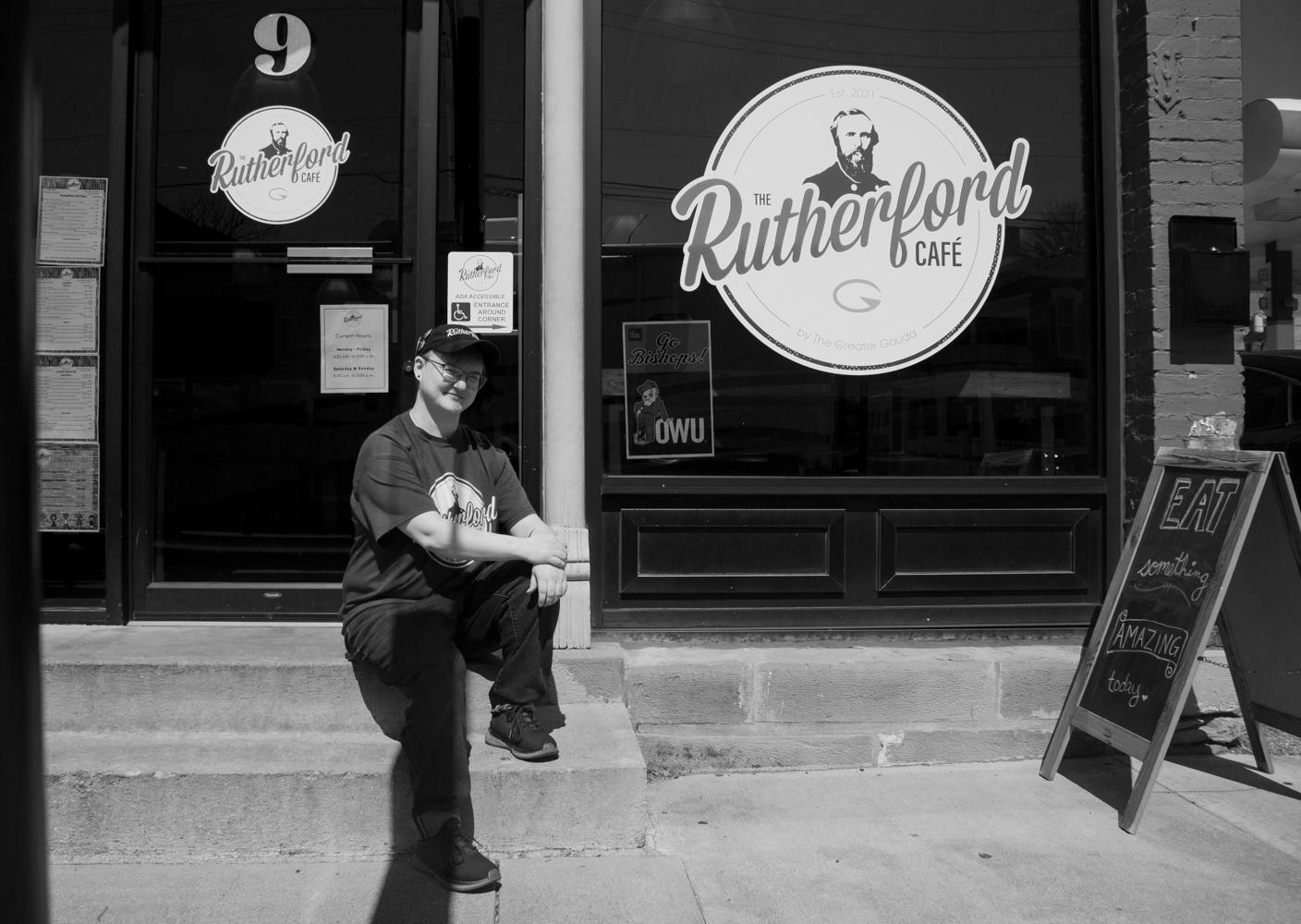
This community “feels like a community that I’m a part of,'' something she's not used to from growing up in the suburbs of Cincinnati. She said growing up in the suburbs, everyone was an “individualist and isolated,” similar to being in Columbus during her undergraduate years. This transition was a “new experience and uncomfortable at first.'' It was family that brought her here. A year after college, her in-laws Mark and Terri Smiles opened the Greater Gouda near the cafe. What inspired her to live in the neighborhood was “the small town feel” and the five-minute commute instead of 30 minutes from Columbus.
Moser said it was “weird at first'' being in a community where everyone “knows you and recognizes you just on the street.” She noted that most of the discomfort stemmed from not being used to this type of community. She had a “realization” that when there is this kind of community, “you’re a part of something bigger than yourself,” which is something she always wanted to be a part of, but didn’t know how.
I wondered what allowed Liz Moser to become comfortable, what it was like being so vulnerable and human in this small town. She came to find that if she had an “off day,” customers would ask, “are you good?” She realized, “They do genuinely care.” Moser is passionate about community service, and while she doesn’t have an unlimited amount of time to share herself with everyone, she believes she nurtures the “community… [by] being a business owner.” She does so by advocating for the donation of unsold food items to organizations such as People In Need (PIN) and gives back to the local schools to “enhance the students’ experiences” emphasizing the fact that school is “not all about academics.”
At Rutherford Cafe, Moser and her husband Andrew create a space for all to feel welcome – it’s part of their nature. She wears her beliefs proudly on her Rutherford Cafe hat embellished with an assortment of pride pins and at the cash register where a pride flag sits nearby. Moser said her business is not “a place to be political, but a place to be welcoming of everyone,” and this shows with the “everyone is welcome” sign facing William Street. A space to gather, to call your “spot,” to create community and be a community.
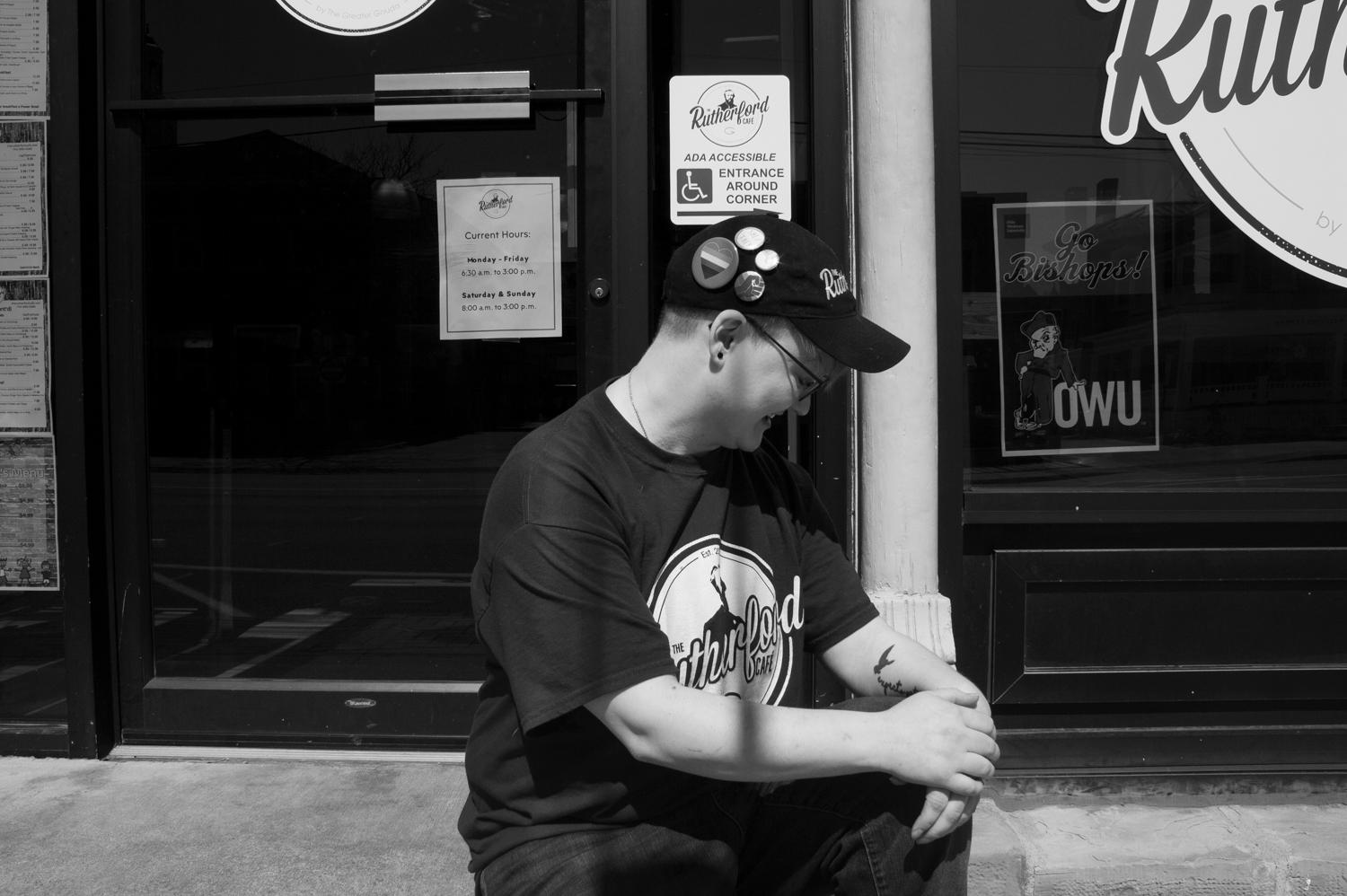 Liz Moser
Liz Moser
Most Americans know the all-too-familiar awkwardness of puberty. There are countless movies detailing how badly some underdog pubescent teenage girl doesn’t want to be herself.
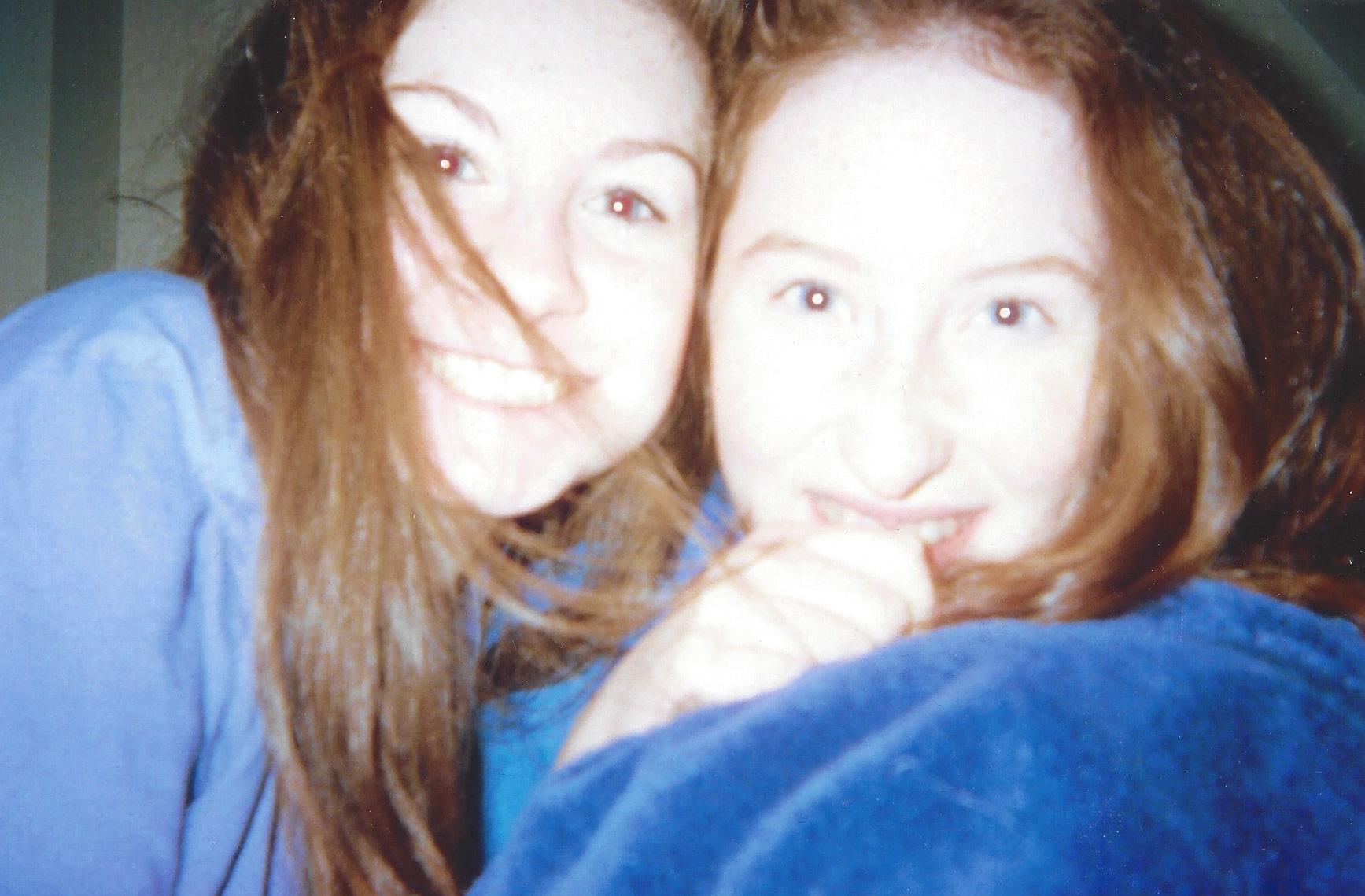
A girl turns 13, 14 or 15. This girl is not popular at school. She makes a wish for popular friends, a boyfriend or breast implants. Her wish comes true, but to her eventual dismay. She is not popular, but she still stands out. Maybe because she doesn’t exactly know what trends she wants to follow or what color she should dye her hair next, but generally, like all teenagers, she doesn’t know who she is yet.
Conversely, she learns her lesson and realizes that she is exactly where she is meant to be. She learns that when you’re in the middle of growing up, there are no answers. You think of 30 million things and get dragged in 50 million directions. Being yourself is the best you can be (but somehow someone still seems better at it than you are).
Though sympathetically awkward, the female leads of old movies typically have a “good-girl” image, a youthful innocence, too delicate and sweet to be had by a man. In fact, these girls next door are more often than not the local beauty, on occasion even being described as a knockout or a bombshell. She generally embodies some sort of romanticized, pure and wholesome femininity that a male love interest is seemingly instinctively attracted to. No matter how relatable their teenage discomfort is, the story of the Girl Next Door is still highly romanticized and, well, a story.
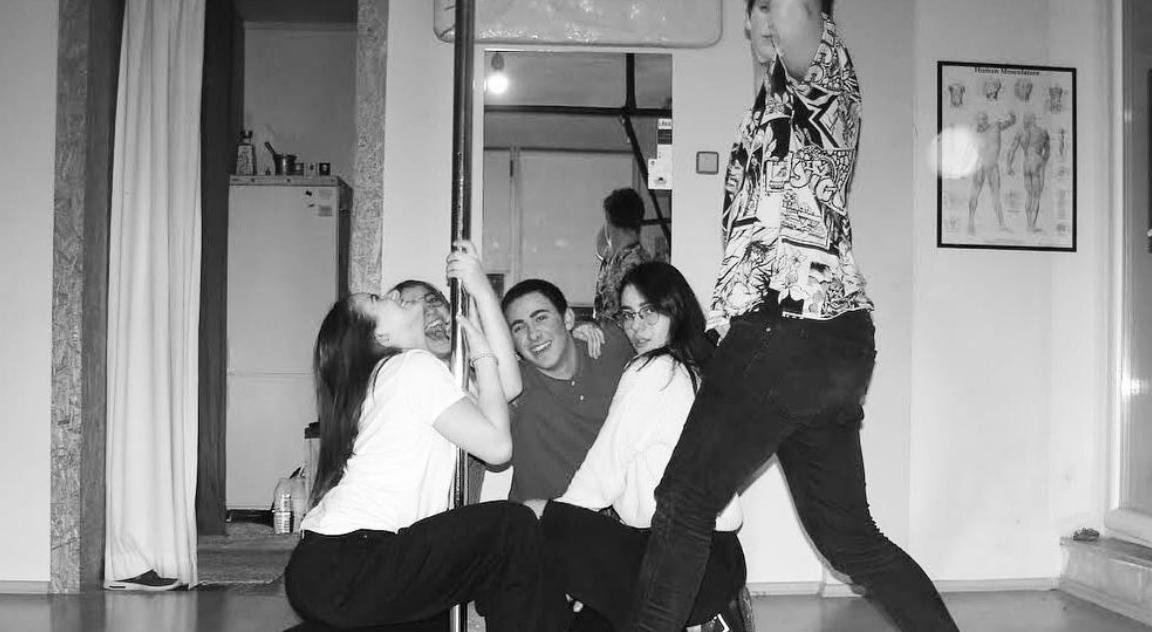 By Maizy Pratt
By Maizy Pratt
Not everyone looks like an Olsen twin or grew up in a well-kept suburb like in “13 Going on 30.” The lack of realistic things outside the conventional white picket fence house and perfect appearance allows for rebellion just as much as it allows for conformity, ushering in the Manic Pixie Dream Girl.
The Manic Pixie Dream Girl (MPDG) is not like other girls. She wears beat-up Converse with her dress, smudged black eyeliner, loves the Smiths, dances when there’s no music playing, and knows all the secrets of the universe. She’s cool, quirky and absolutely unforgettable.
She appears in films such as “500 Days of Summer” and “Eternal Sunshine of the Spotless Mind,” where she completely changes the lonely, introverted, indie male protagonist’s life forever. She teaches him how to embrace the little things in life before she suddenly disappears, leaving our protagonist with the realization that there
The MPDG exists solely in the imaginations of tortured writer-directors to teach young men to embrace possibility and adventure. We never see her internal dialogue because that’s the whole point — she is never meant to be understood as a fully dimensional human being.
The biggest part of her allure is that she is a mystery. We never see her thoughts or reasons for doing things. Once the layers of her complexities are pulled back to reveal a normal human girl, she loses her sparkle. And in this way, she can never exist in the real world, only in the fictional world of the male gaze.
Despite the core of her character being unlike other girls, the message she sends is as equally harmful as one of conformity. She is an eversupporting actress destined to develop male leads for all eternity. She not only sets a precedent for teen boys to change only when they fall in love with a girl who sees the parts of life that he cannot, but also that teen girls can expect to remain exploitable and whimsical plot devices to their male counterparts.
These tropes in the media of the past couple of decades are what set the standards for teen girls. Standards of beauty, lifestyle, and relationships. Girls watching these movies and TV shows are seeing idealized versions of what being a teenager is “supposed” to be like.
I remember watching “Mean Girls” as a fresh 14-year-old and wondering what lunch table I would sit at in Regina George’s cafeteria kingdom.
Even though I wasn’t consciously thinking that to be pretty and popular I needed to look exactly like one of the plastics, I was seeing what I thought was a legitimate depiction of high school.
Not only did I eventually realize that a real 16-year-old doesn’t usually look like a Hollywood It-girl, but I realized that real-people high school is completely different from movie high school. People don’t fall into cliques, and people are far less shallow than characters in teenage dramedies of the 2000s.
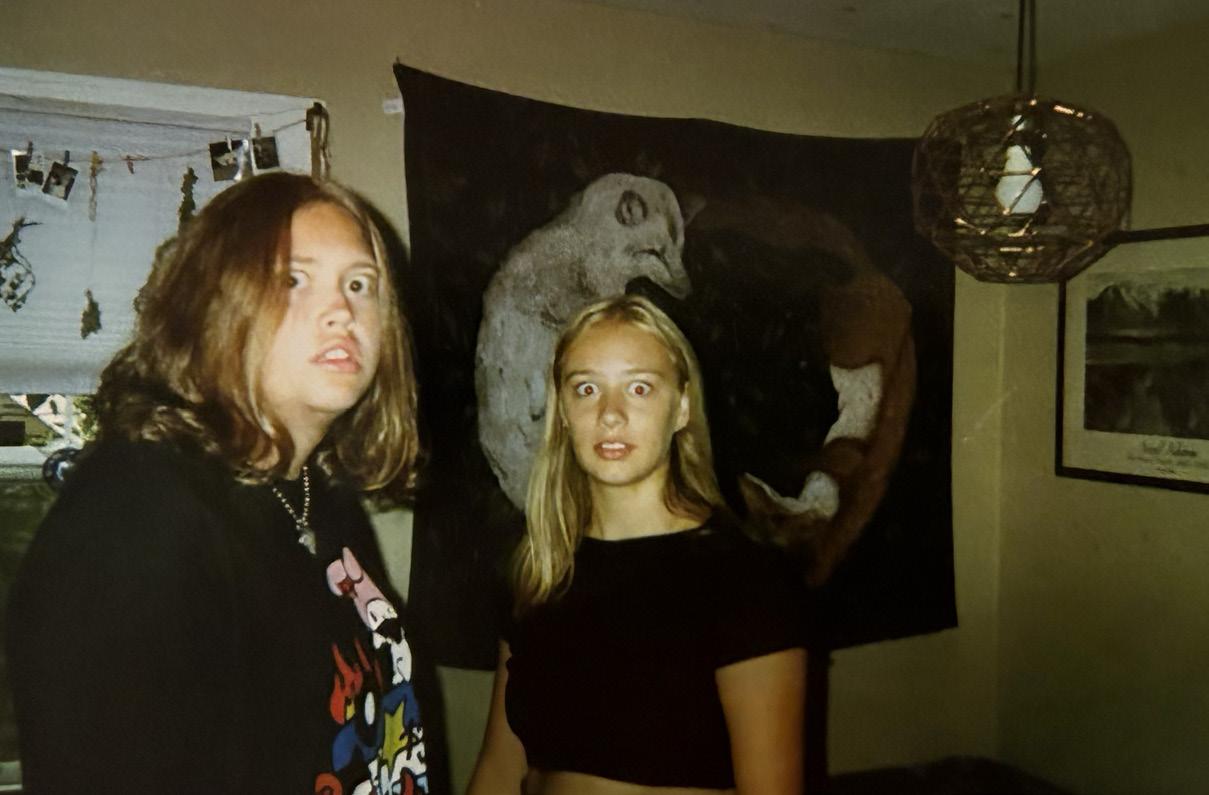
Instead of the Ramona Flowers and Rory Gilmores of the 1980s, ‘90s and 2000s, today’s teen girls now have social media to admire and follow. Social media stars like Emma Chamberlain, Charli D'Amelio, Kylie Jenner, Addison Rae and Loren Gray make content about makeup, travel, their day-to-day lives, and more. While these are real women who happen to be famous for posting about their lives, they still present a very curated and edited version of their lives. This still sets unrealistic expectations for young girls, and could almost be more detrimental to teenagers’ self-esteem.
While seeing women with all different kinds of personalities and backgrounds can absolutely inspire girls to be themselves, they can also set unrealistic expectations for being a woman and what being a girl means.
What teen girls need to see is real people. Real girls who look like they do, act like they do, have families like they do, and talk like they do. Real girls need to see real women with real lives, without the scripting and editing.
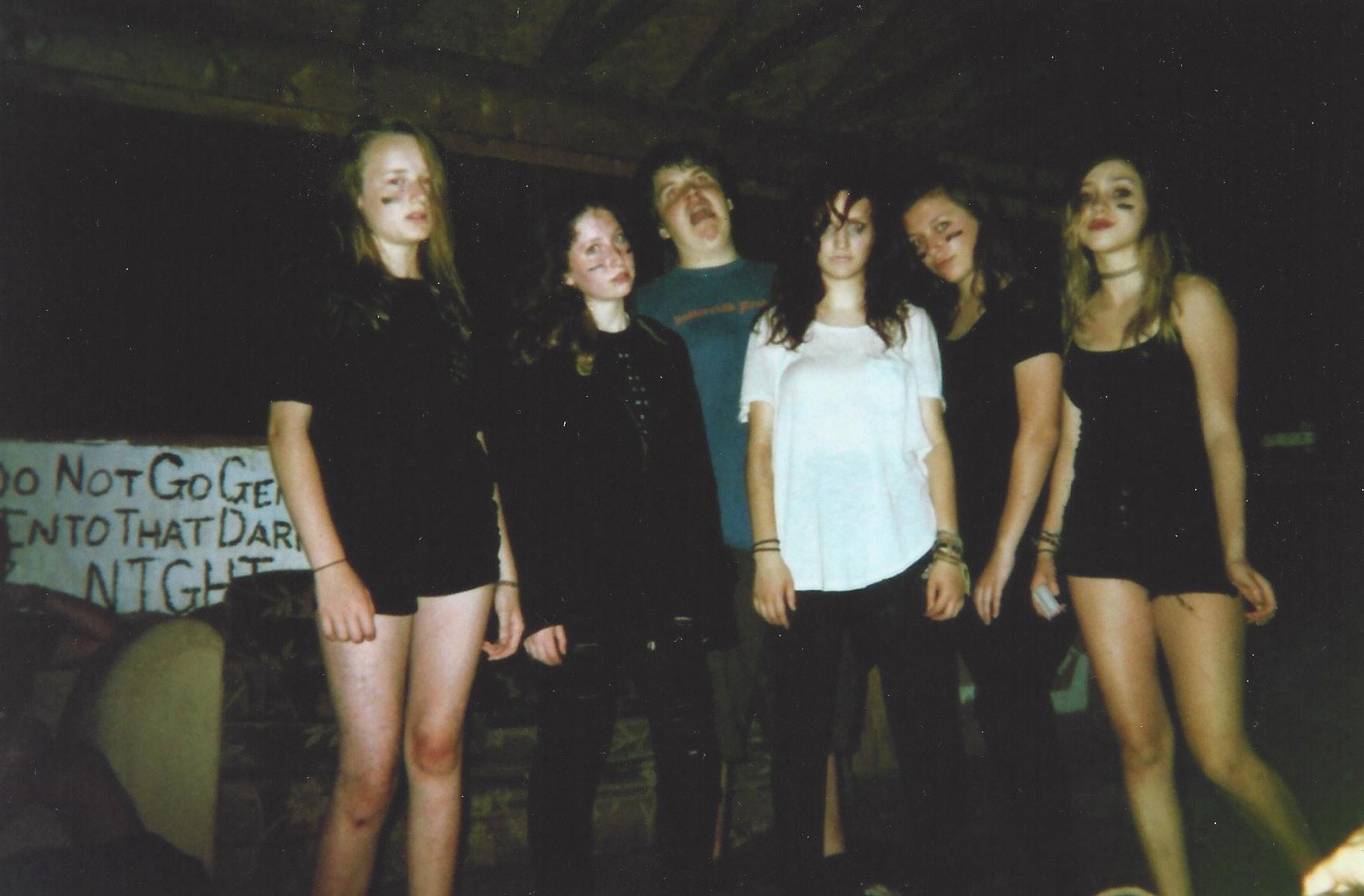
Walking up North High Street in Columbus, you’ll be greeted with the midcentury pinks and teals of Out of the Closet, a combination thrift store and pharmacy. In addition to clothing, the stores accept donations of furniture, books and houseware. Ninety-six cents of every dollar is donated to HIV/AIDS treatment and prevention services, in addition to offering information about free HIV testing.
1230 N. High St., Columbus
Withfour locations in Central Ohio and an online store, Clothes Mentor curates its selection to focus on reselling designer womenswear and accessories. The handbag selection available on the website featured brands like Louis Vuitton, Kate Spade and Coach interspersed, as well as more affordable brands. Their clothing section featured a similar mix of ready-to-wear and diffusion brand names. The gently used yet high-quality clothing offers a great way to sustainably and affordably expand your professional wardrobe.
5891 Karric Square Dr., Dublin
1331 Stoneridge Dr., Gahanna
Flower Child features vintage clothing, furniture, and accessories. With stores in both Cleveland and Columbus, they provide an eco-friendly way to ethically source vintage items from the 1930s through the 1980s–eras of clothing that might be hard to find in regular thrift stores. The stores are packed with a healthy mix of statement pieces for your wardrobe or your home. Follow their Columbus location on Instagram @flowerchildcolumbus to see more of their funky vintage goods.
233 E. Fifth Ave., Columbus
What you’re never told in creative arts education is that to think outside the box, you must first be put in a box. Therein lies the problem. What happens if you want that box to have a new texture, a different shape or you want to dismantle the box altogether?
My name is Payton Andisman. I graduated from a nationally acclaimed performing arts high school as the first student to officially double major between two departments. For me, it was instrumental performance and musical theater. Students were driven at the highest standards to perform, create and explore their identities as artists. At least, that’s what we were led to believe.
Throughout high school, I had a wanderlust for creativity. I still do. But my passion for creative exploration was met with threats from the band department if I did not step back from theater, and I was a pariah to the theater majors because I was not truly “one of them.”
Puzzled, and continuously questioning why others around me felt that the distribution of my time did more harm than good, I never grasped why they did not understand how powerful the experience was of learning from one form of creative expression and applying it to another. Even the school itself did not put both majors on my diploma at graduation.
As a multi-medium creator, I’ve carried their fear of my expression as inspiration.
After all, it’s who I am. I am nothing without all of me.
And, I am not alone.
This led me to Saturday, February 11, when I sat around a table at Boston Stoker Coffee Co.
with three creative individuals from multiple artistic worlds. Despite our different experiences, I could tell we were all equally inspired to create new realities.
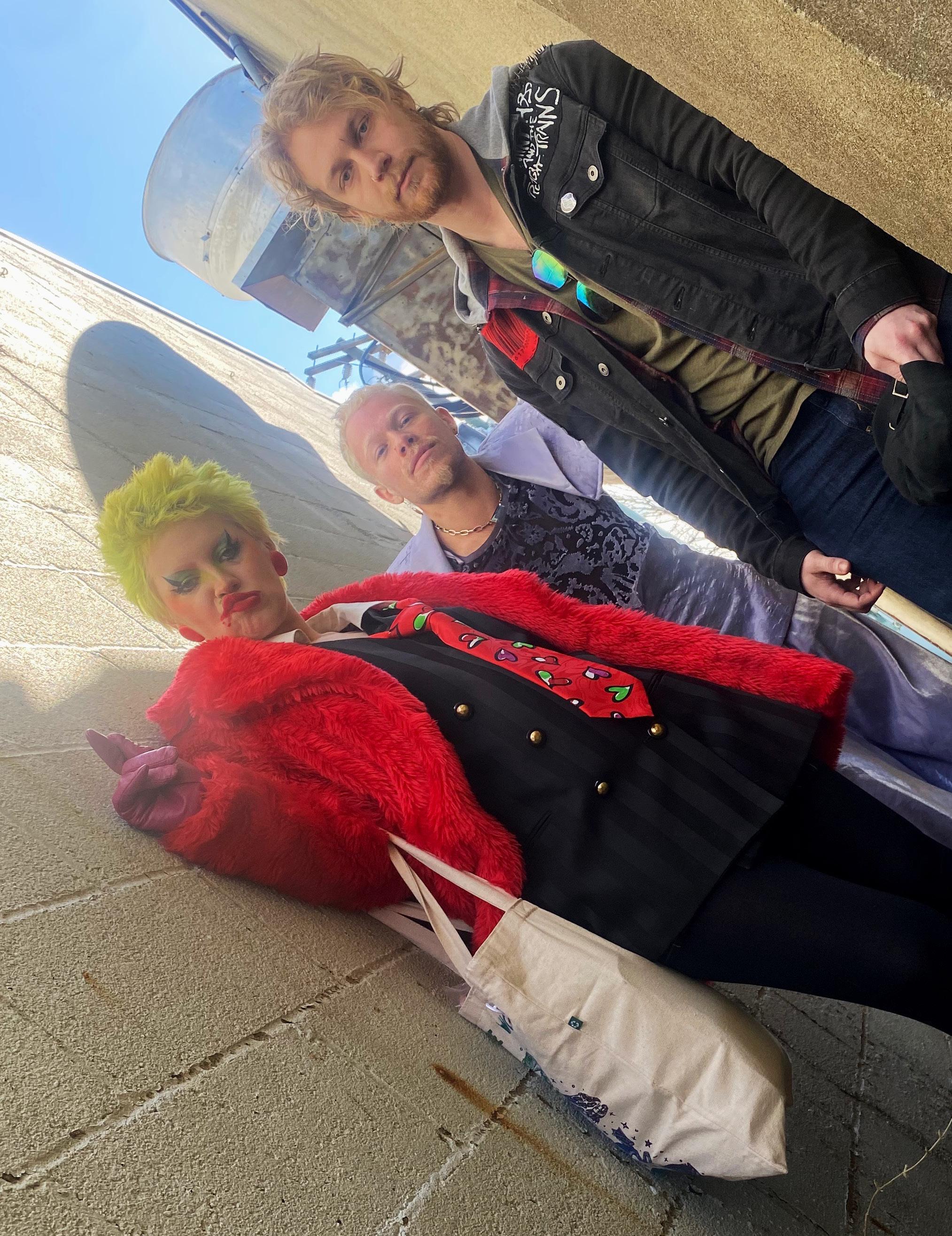
I asked Snot Rokette, “What do you do to get yourself out of a creative block?”
“Easy,” they responded, “ do other art .”
If you recoil at their name, just know, that’s their intention. Snot Rokette (they/ them), class of 2021 Columbus College of Art & Design graduate and freelance performance artist, is a character on stage by night, but also embodies their performance persona by day. But this was not always who they were. “I was wearing black because I was so insecure about myself as a human being. I didn’t realize until I started putting color and exaggeration into my wardrobe that I was really like, ‘Oh, this is what it’s like to be alive.’”
Snot’s persona of “the underbelly of the white picket fence” is an identity of empowerment that translates from their fashion, stage presence, makeup and more. Through discovering that their internal monologue is best suited to the mantra “yes, I am beautiful, but I’m also disgusting,” they’ve realized the power of creating their own identity despite what others think can be incredibly fulfilling.
“Whenever I get to put on the green face and extravagant clothing, it just doesn’t feel like I’m stepping into a costume like somebody else would at Halloween. It feels more like ‘that is me, that is what I’m supposed to be, and it’s not a facade. It’s like my innards coming outwards.”
Across the table, Landon Manuel (he/they/she) is an imaginative and bold soul who
limitlessly seeks new ways to express themself through mediums including, but not limited to, performance, visual art, singing, songwriting, dance and fashion design.
Manuel, 26, works as a performer for Shadow Box Live in Columbus, dances with Tru Kingdom Mega Crew and finds additional work custom framing art. With so many diverse art forms, it might make you wonder, from where has their identity found its inspiration? Manuel has learned, to express outwardly, you must first look deeply inward.
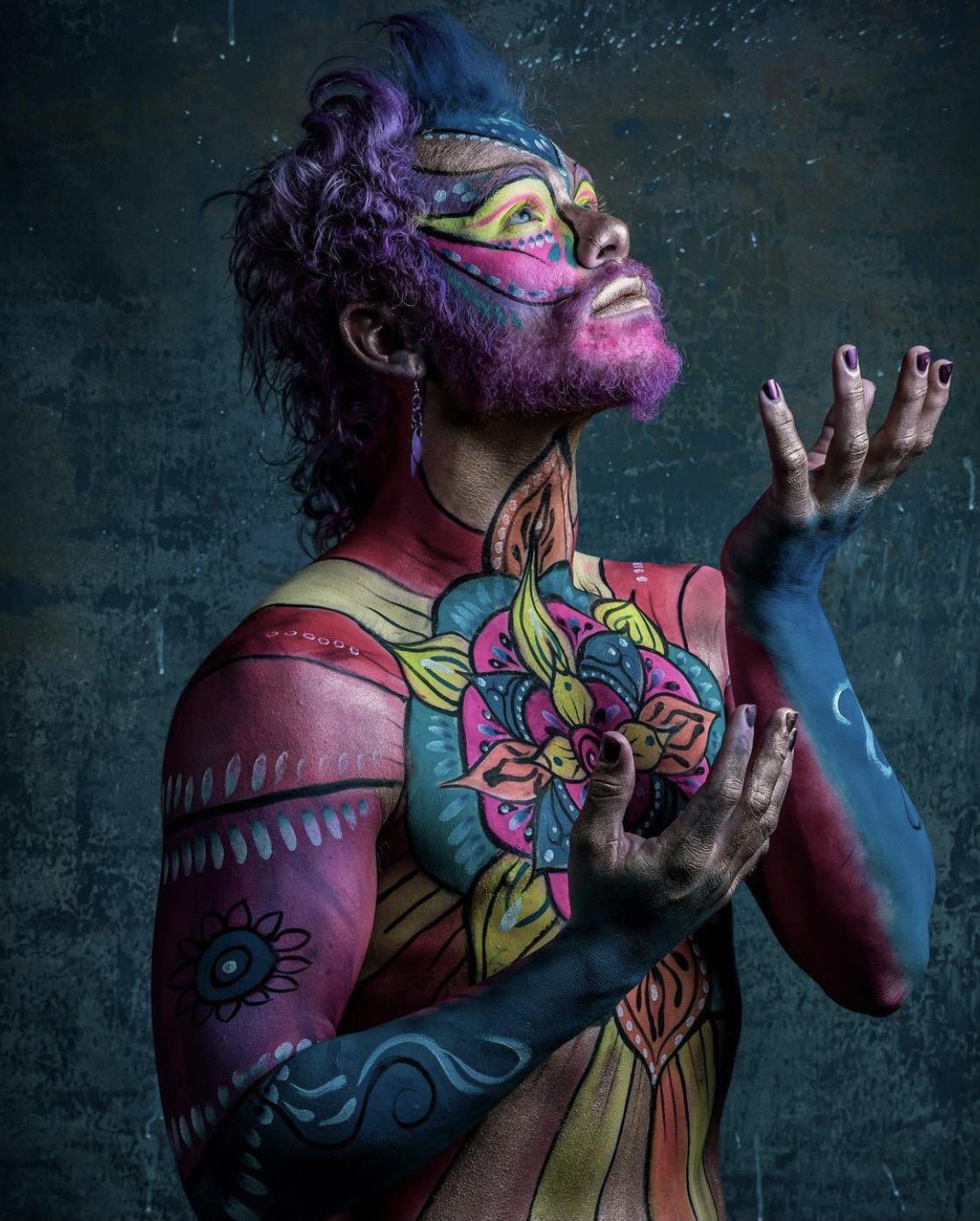
“Identity can be found in a lot of different places, which is why a lot of different art forms are where I find myself putting my time into. Seeing that outward reflection of how you idealize yourself internally, it isn’t something that you’re just going to find. You have to make it. So I think identity is
something that is made through however you live your art. You create it through your life in how you choose to live.” To Manuel, art is an identity, and he is living it through self-discovery and creative passion.

To the left of Snot Rokette at our table, Archie Falandys (he/him), 23, is a multi-instrumentalist and vocalist for local Columbus punk bands Kiss Pink and The Catchwords. To him, his sense of identity is as dual as being both instrumentalist and vocalist. “Who you are and how you represent yourself will often be different things. Like the inner self and outer self. Learning to make peace between those two things is really your identity.”
Like Snot Rokette, Falandys desires to alter the standards of the perception of beauty. Though, in Falandys’ approach to this idea, he strives to create his own path with influences fueled by his most meaningful memories. He said, “I want to make you question what beautiful really is.”
Through the arts and the continuous creation that these individuals put out into the world, they show us that identity isn’t something innate. It’s the art piece that you work on every day, and throughout your entire life.
So then, why would anyone ever constrain the art that someone can produce? What are the spiritual
Photo of Landon Manuel by Steve MaloneIdentity isn‘t something innate. It‘s the art piece that you work on every day, and throughout your whole life.
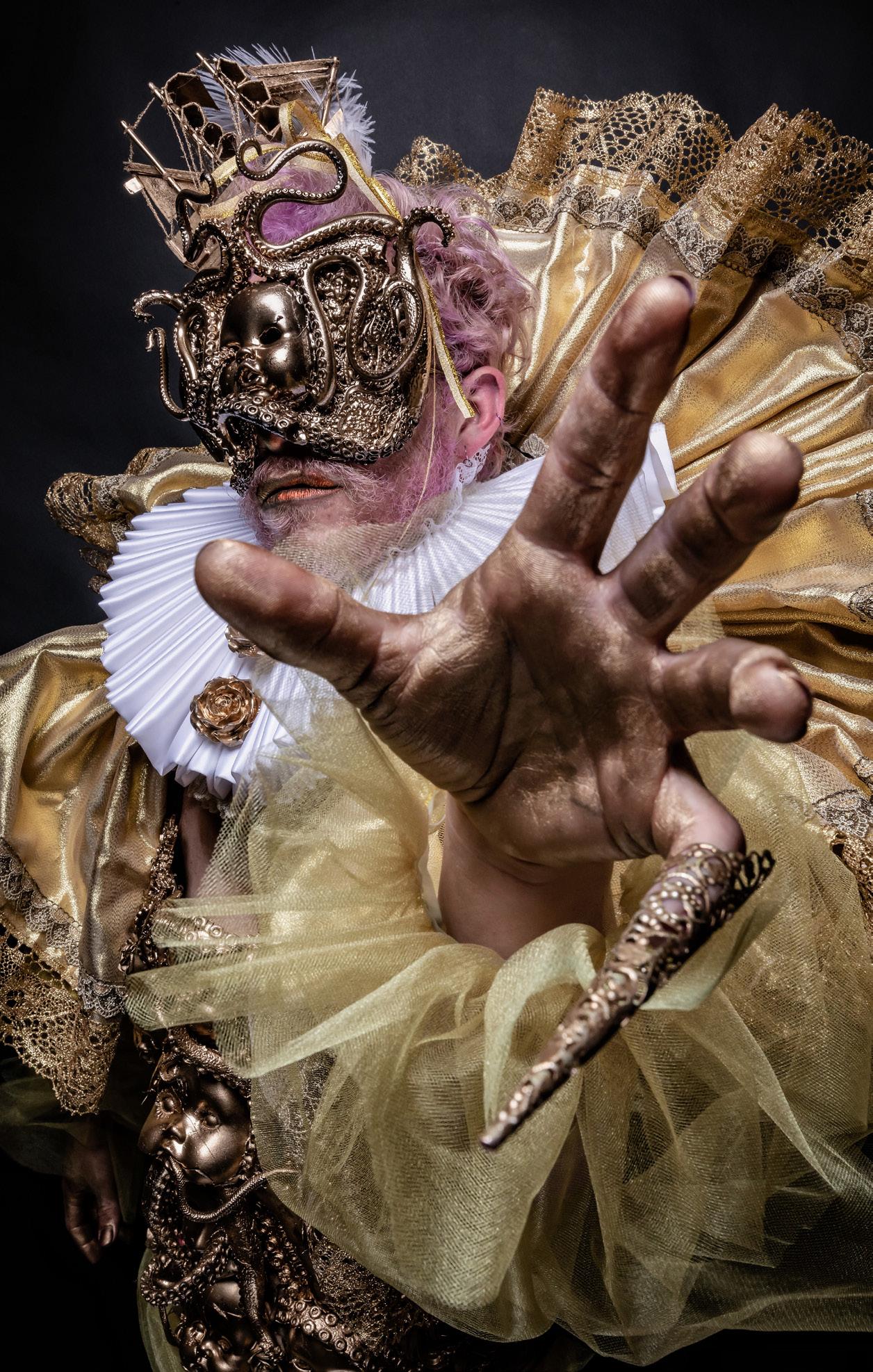
People should experiment. It‘s unlimited.

- Payton Andisman
Landon Manuel
repercussions of creative expression, or the developmental damages to an artist who is finding themself and is told to stay in one lane?
To find all of the centers of your most balanced self, you must synthesize many of the ways that you feel different to make every piece of you into a whole. Nevertheless, these feelings of expression cannot just stay contained inside.
Take it from Landon Manuel, who refuses to let his identity be internally confined: “Clothing is a very powerful thing. It can be used for good, or it can be used for evil. I’ve been in a box of uniforms where ‘you have to wear this every day,’ but giving that stipulation to anyone is negative because it limits room for people to be able to live in their human body… I think clothing can be a tool to equip you for the life that you want, to be the person you want to be… which can change from day to day!
I dress in a very monochromatic way most of the time, and, sometimes, attach a certain mentality with the colors I’m wearing or gravitate towards certain colors for the mood that I’m in or the
mood that I want to be in. But it doesn’t have to be one way or the other with anything. People should experiment. It’s unlimited.”
Manuel acknowledges that who you are is a constant evolution, and every day can provide new shifts and a different flow for you to embrace.
Archie Falandys believes that identity is a long-term artistic craft; your appearance is a temporary snapshot of who you are, one that can make a first impression strong enough to connect you with others or send them away.
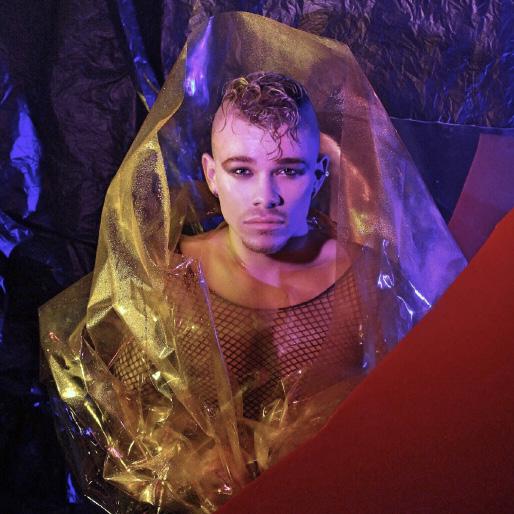
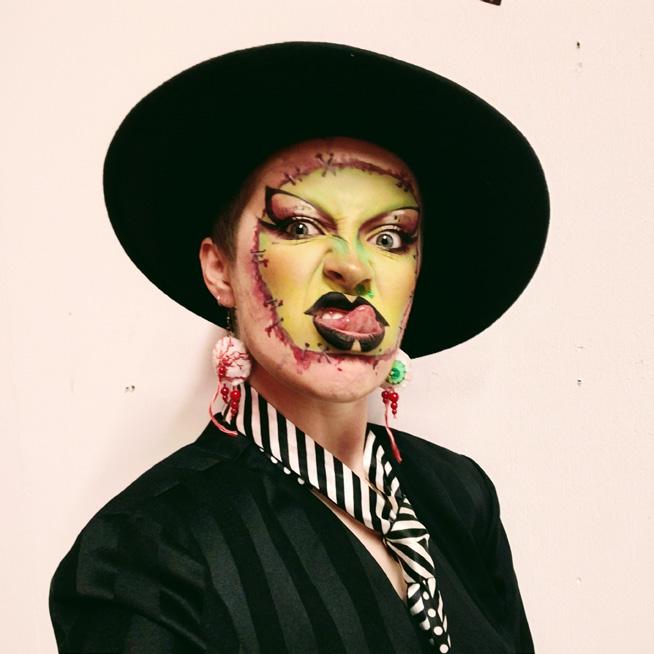
“I work at a children’s hospital now,” Falandys said. “And from what I have to wear, a lot of people think ‘you’re a punk, you must hate that.’ But I don’t care. I could do my job in a skirt and thigh highs and I don’t care. I think you should be able to wear whatever you want in any situation. It’s back to how you present yourself, but it should be ‘what do you feel comfortable in?’ If I want to wear sweatpants and no shirt, it’s not fashion, technically, but it is saying how you are in that moment.”
I’m inspired by Snot Rockette, Archie Falandys
and Landon Manuel. Not one of them has let the thought ‘I might fail, which means I shouldn’t even try’ hold them back. They don’t let the fear of not producing or expressing what is ‘right’ in that moment diminish their own immeasurable selves.
Falandys encourages himself to express without any restraint, for the sake of finding what really counts, even if he fails along the way.
“Your first mistake when you’re trying to make something good, is thinking that it’s your job to make something good,” Falandys said. “You’re trying to make something . You’re going to make a thousand bad things and you’re gonna get one good thing at the end. It’s quantity over quality and you put out the quality. Even if you say ‘man, this song I wrote sucks,’ just keep writing and just get it out.”
Snot Rokette echoes this sentiment: “You have thousands and thousands of bad drawings or designs in you, and you need to be able to get those out because they are important. They are just as important as the gold. Also, you need to be able to express yourself in other ways when
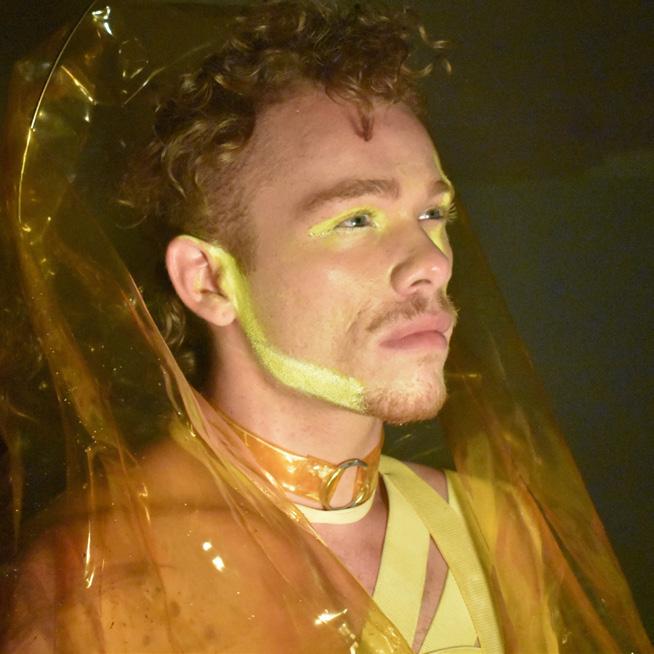 Photo courtesy of S. Rokette
Photo of L. Manuel by: Kinson Cichon
Photo of L. Manuel by: Jamie Albert and Oliver Wendell Holmes III
Photo courtesy of S. Rokette
Photo of L. Manuel by: Kinson Cichon
Photo of L. Manuel by: Jamie Albert and Oliver Wendell Holmes III
the one way is not working. I love drawing and I love making art, but sometimes, that doesn’t cut it for me and I have to just move onto something else to be excited about drawing (or something else) again.”
At the heart of what I’ve learned and what I hope you, too, take away, it’s that everything you do accumulates toward your higher purpose of being. For Landon, he calls this his “soul work” and, to him, that’s creating original music. However, Manuel puts this into perspective for us, that music, and the creation of it, is not one singular organism.
“All the other things I do somehow supplement or are training me for that. I dance every week to prepare my body for the visual expression of things that I plan to accompany original music. The visual representation, creating clothes, trying different combinations of things, digital work, there’s just a lot when the end goal is to encapsulate and create a conceptual body of work. But it intertwines with so many people, so many lives, so many things. I’ve learned the most of anything from my friends, and from working with other artists on random projects at random times more than I ever did in school, and that’s the kind of stuff that feels like it connects me more to that soul purpose.”
It takes a powerful thing, such as art, to bring people together and unite them at the level of the soul. It is even more powerful when it presents the opportunity for identities and ideas to merge and even create something wonderful and new.
“There’s a lot of people that come across your path that you can create connections and have collaborations with, and that’s how your art interacts outside of you,” Manuel said.
When we are acutely aware of the power of artists coming together and the importance of removing the boundaries around individual imagination, we must return to the problem at hand: Why would anyone ever hinder another’s expansive creativity? Perhaps there are some in this world who fear those who cannot be defined by one thing. Yes, the world is competitive, but only because we make it that way. What if we stopped, and instead of boxing in our identities to work towards being the best at something, embraced diversity for the sake of individual fulfillment and joy?
I ask you, what is so bad about being mediocre at something and loving it just as you are? Or, what might be the root of the issue that creates dissonance in places of artistic learning, what if you excel at many things and love to do them all?
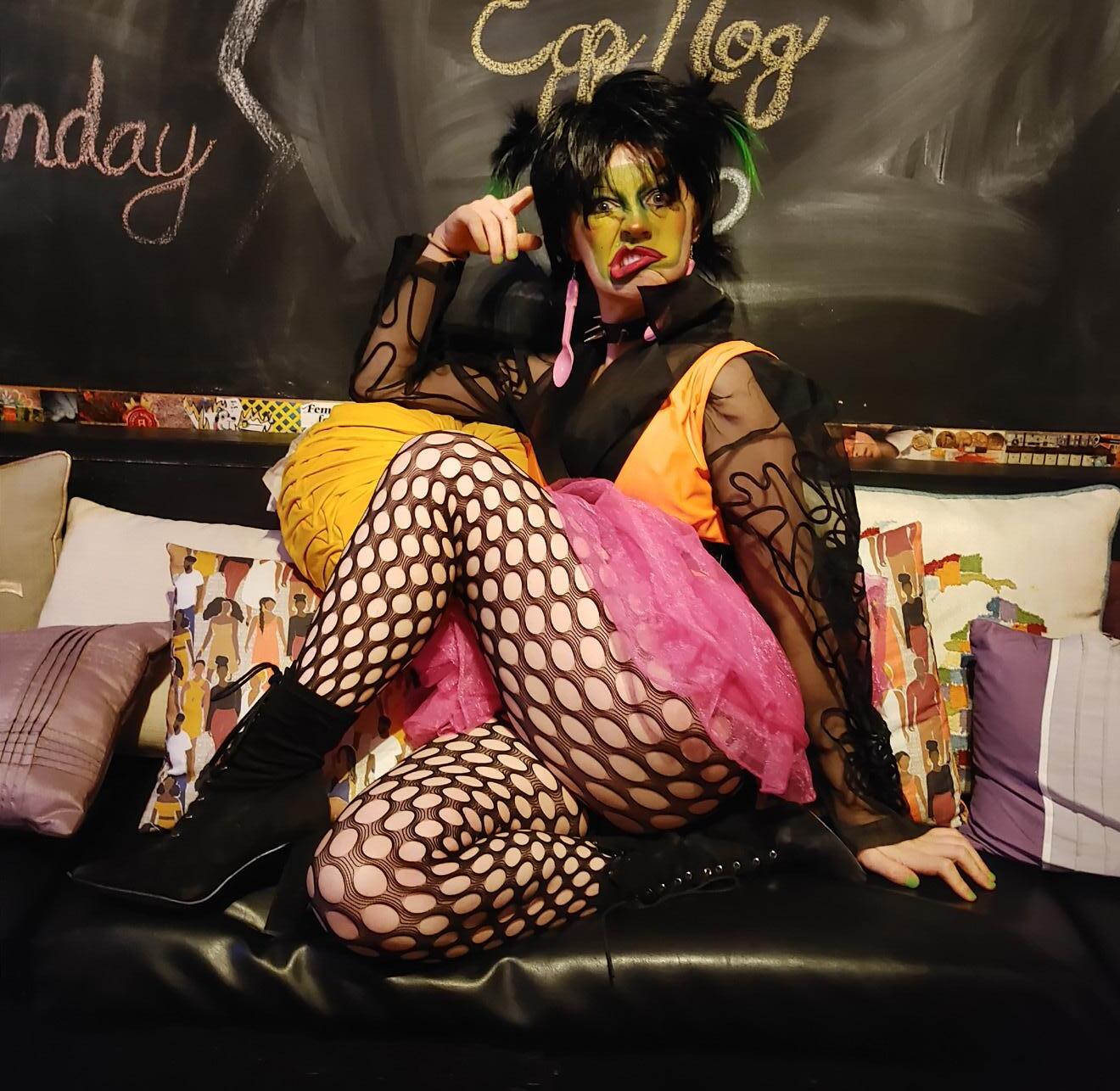
Perhaps your art isn’t on a stage or on a canvas. Maybe it’s in a lab or in a book. With all of your creative endeavors together, you could multiply your artistic abilities like an equation of creation to create something new in whatever it is that you do.
But the truth is, what you find your art in is part of your identity, because it’s part of your soul. Your soul belongs to no one but you, and nobody else can define the limits that you can extend yourself to find your passion and purpose.
So when you feel stuck, afraid to try something out of your comfort zone, or are looking for new inspiration, don’t proceed with hesitation. Just remember:
“Keep doing other art.”

In a stale dining room hangs a beautiful painting. It is painted in the style of modern absurdism and its bright colors seem out of place in the stagnant environment. The moment is washed over with Norteño Country Western music, giving a sense of mundane yet at the same time the feeling that something is about to change.
This is one of the first shots of “Enmity,” a short film by Peter Lujan and it sets the pretext for a series of events that unfold in the next nine minutes. “Enmity” is a story that deals with gentrification and appropriation, told through the lens of two teenage boys who plan a heist to take back what was stolen from them.
Lujan, a senior in communications at Ohio Wesleyan University, sat down with me to talk about inspiration, aspiration and thoughts on the world of movie making. This interview was edited for clarity and length.
Liz Nebel What would you say are your main inspirations when it comes to directing and writing?
Pete Lujan To me, music… if I don’t have music, I can’t write. I listen to a lot of hip-hop, Jay-Z is my favorite hip-hop artist. I listen to a lot of Drake, Lil Wayne but I also listen to a lot of classical stuff like Nicholas Britell... Bob Dylan is an artist I’ve been really into recently. A lot of stuff from the ‘70s, like Elton John; he’s probably my favorite musical artist just like overall.
LN Did you see the biopic movie about him?
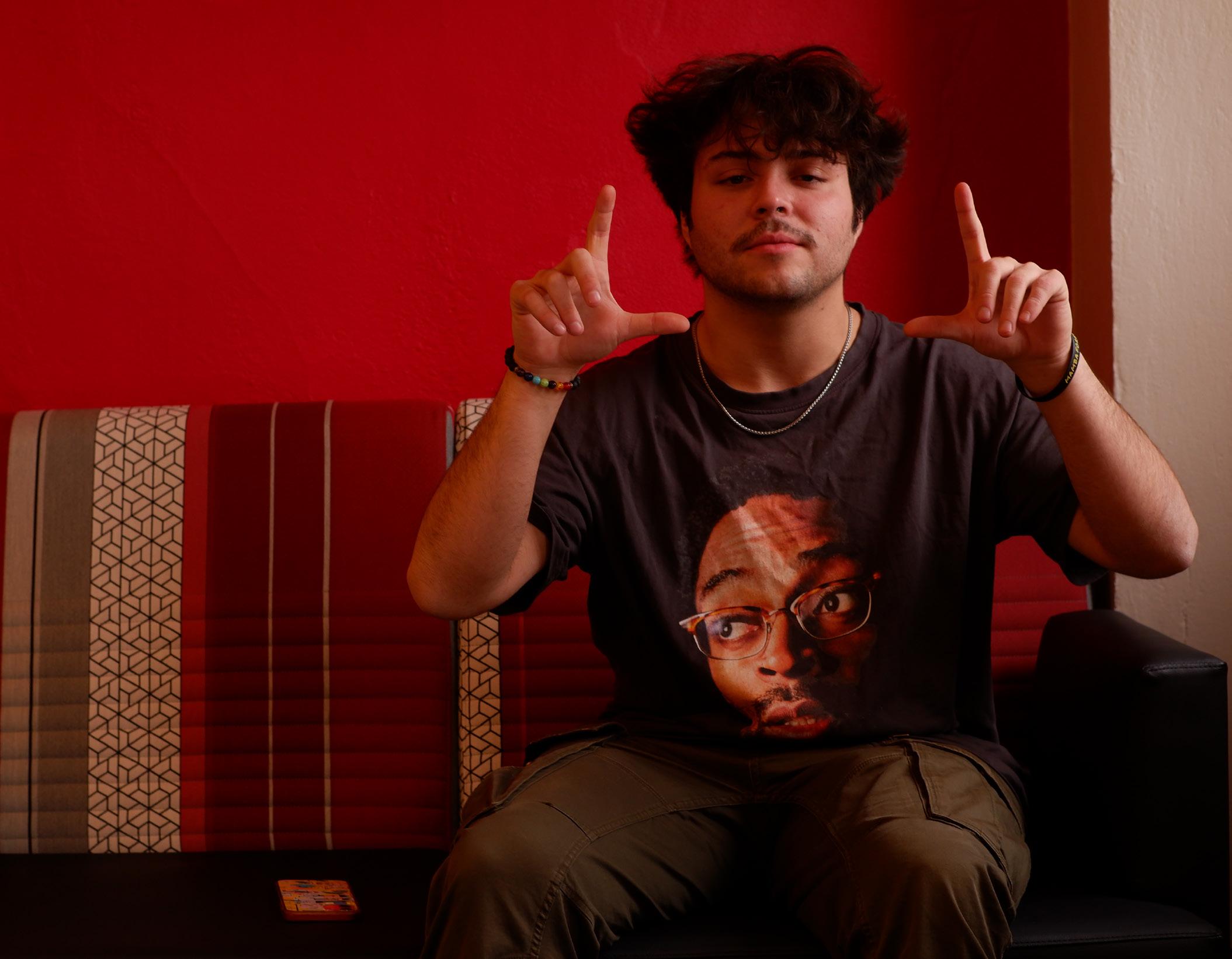
PL I remember seeing that movie (“Rocketman”) and being like, ‘Whatever this is I wanna be a part of something that makes this.’ That movie had a crazy impact. Film-wise, Martin Scorsese is like a god to me. You know ‘Taxi Driver,’ ‘Goodfellas.’ He’s kinda like saying a basketball player likes Michael Jordan, but more recently the Safdie brothers are probably my favorite. What they do is kinda like what I wanna do with film. But they are just these guys from New York and they really started making movies just going out on the street with cameras and just getting life. It’s shaky and messy and chaotic...
LN While I was watching, the film surrounds some themes of class differences, gentrification and cultural appropriation, specifically with indigenous Latinx groups. Would you like to talk a bit about that?
PL I was born and raised in Sante Fe, New Mexico, and I had a really interesting perspective on things because my dad being his first language is Spanish, born and raised in Northern New Mexico. My mom is from Maine. Like from far east…
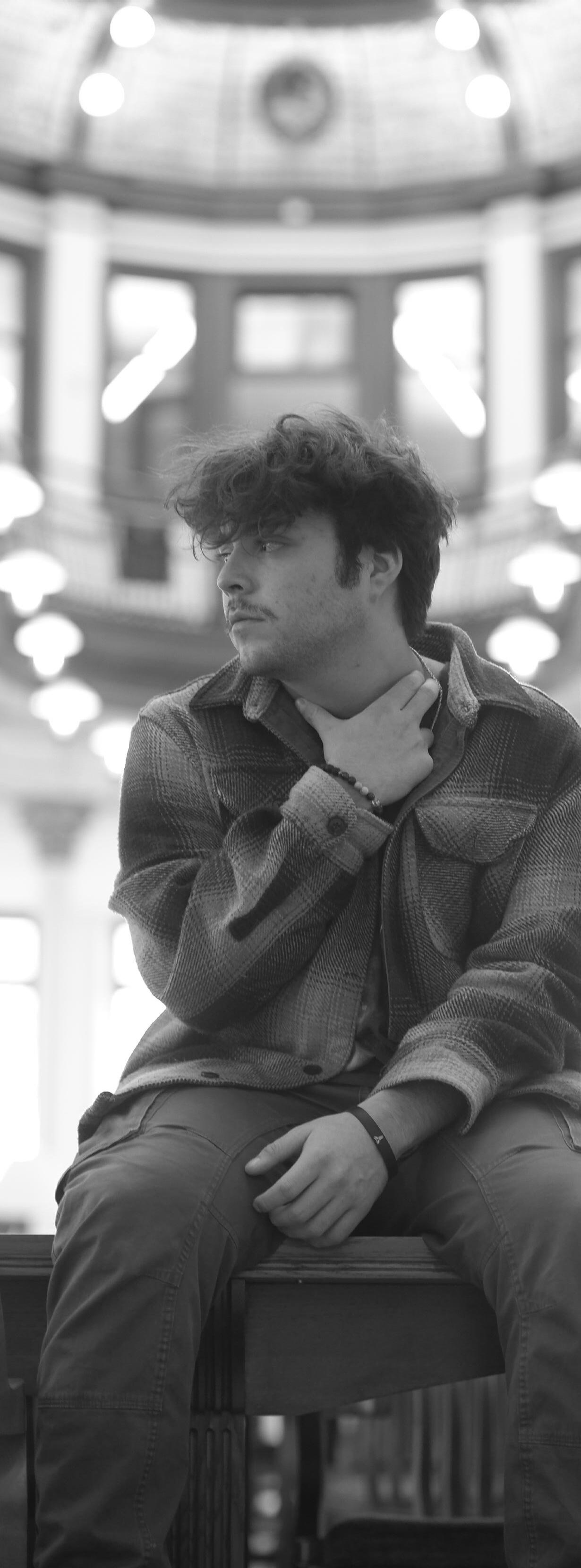
LN The other side.
PL Yeah, the other side. We would spend every summer there and the rest of the year in New Mexico and just kind of growing up with these two juxtaposed things. And as I’m growing older, (I’m) seeing it more in-depth on a social level. My girlfriend in high school, lived in the really lower-class area of Sante Fe so I spent a considerable amount of time down there and then from her house, I worked at the restaurant that I shot in for the movie. That restaurant is on a street called Canyon Road which is one of the most famous streets for art in America. Houses down there sell for like five million dollars. So, in the same day, it’s like going from the south side of town where it’s the projects basically to that.
You know, the stealing, the painting is a kinda vehicle to show that these kids are stealing their culture back
LN So the beginning of the film and the end of the film feature a country western-style song. Is there a reason that you chose that?
PL I wanted to do an original score [because] score to me in film is huge. Score is telling the story simultaneously with the picture, just telling it in a different way. There were three things that really went into the score; (the scores from) ‘Silver Linings Playbook,’ ‘Good Time,’ those two were the tempo I wanted to work with.
PL The way I like to edit is based off music and downbeats. So for me, I really like to have my cuts on certain downbeats so those are the songs that I felt, the beginning with the long tracking to these jump cuts, that was the tempo I wanted to start with.
LN Did you ask score composer Dani Martinez to go for more of a country western sound as it is in New Mexico? Because even the instruments used are very country western.
PL I had my dad make a playlist of Norteño songs and I sent her [Dani Martinez] those three things and was like I would love a fusion of all this stuff, and she sent that back! She did an amazing job.
LN It’s cool that it is an original score because, for a small production film, it is not very often that you get to have that.
PL I feel like an original score can kinda just make it feel more authentic in a way. Like there is a hand behind it, so to speak.
LN This movie tells the story through a heist. Did you get any inspiration from other big heist movies like ‘Oceans 11’?
PL I love ‘Oceans 11,’ great movie. I love heist movies. ‘Good Time,’ for instance, was a big influence; that’s a Safdie brothers movie. You think like they are stealing… like externally they are doing something wrong.

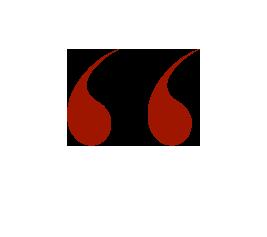
LN There is a moral reasoning on the other side of it, it’s not just that.
PL When you take a step back, it’s like think about context, to me it’s more about ‘why are they stealing?’
LN Instead of just the act of stealing.
PL Right. Early on I was speaking with another filmmaker and I said, ‘You know, the stealing, the painting is a kinda vehicle to show that these kids are stealing their culture back’. And when I said that his eyes lit up, and that’s when I was like, ‘ok, that’s what I gotta follow.’
PL At the heart of this, around everything, it’s a story about these kids taking back their culture.
LN On that note, at the end you have one of the kids who stole it, he’s put on a cross which is a very strong choice. What was the symbolism you wanted to convey with that? The guy who puts him on the cross is a white man. Was that a conscious choice?
- Peter LujanPL This artist character Oculto is a character I’ve been developing for two years. Oculto, in Spanish, means hidden and the idea of this character was I wanted to create someone -- who we see a lot in Santa Fe – artists who pawn off the culture, acting as if it’s theirs. That was the idea of him being this mysterious white guy.
PL The idea of the cross was more about the Sante Fe thing. Despite the juxtaposition where its nickname is The Land of Enchantment but locals call it The Land of Entrapment because there is sort of this cyclical thing of generations sort of get stuck in the city doing nothing. Sante Fe is a really Catholic city, especially in the lowerincome areas. And there is this very interesting ideal that’s sort of like, ‘don’t worry, God’s got a plan for you’... and I think that mindset can breed stagnancy and complacency…
LN It is what it is, it is what it’s supposed to be. It’s not my job.
PL Right, so there’s that line in the movie… ‘It is what is.’ So showing this idea on the most symbolic level, you know it’s a cynical view but like what is religion gonna do for us, this idea of naivety. I think that’s partially what the feature deals with…fate and moral absolution.
LN Just watching it and hearing you talk about it, it seems like there is just so much more. It kinda feels like the short is like a clip of the middle, a clip of the beginning and a clip of the end and there’s so much more in that.
LN You just have to get the opportunity to make more.
PL Exactly, and you know I’m confident that eventually it’s gonna get made but it’s a big thing and I have a couple others, so it probably won’t be the first movie I make.


LN Do you feel that in the pieces you write, your identity comes into play whether that’s the story or the characters that you create?
PL It’s impossible not to. For me, I write a lot because… you know I am a very conflicted person and I struggle with stuff and I don’t even understand. My way of understanding it is through writing.
LN I feel like people who are super religious use religion as a way to figure out why they are here and people with art, use art as a way to figure out why we’re here.
PL Absolutely and so I mean everything in life. The thing I am writing now is about a standup comedian but it’s really about his relationship with fame and his relationship with his girlfriend. And so when you’re writing stuff like that, it’s impossible not to use some of your own stuff. I’m not interested in making anything if it’s not honest.
LN I think having honest work is what makes people really connect with it.
PL A hundred percent. We go to art to see our lives reflected, we go to art to see our lives romanticized. And I think that when you see an honest film you can tell that there’s heart behind it, an author behind it.
PL I can’t even put it into words, (but) that’s the thing to me that makes cinema like so… the feeling that you get when you see an honest film…
LN Lastly, what do you hope to be doing in 5-10 years?
PL Writing and directing movies...if I am honest with myself, I want to be one of the best filmmakers in America and kinda anything outside of that lane is sorta out of the question for me. At the heart of everything, I think you know storytelling is what I’m in love with.
We go to art to see our lives reflected, we go to art to see our lives romanticized. And I think that when you see an honest film you can tell that there‘s heart behind it, an author behind it.- Peter Lujan
EDITOR-IN-CHIEF
ELIZABETH NEBEL
COEDITOR-IN-CHIEF: ANNA EDMISTON
MANAGING EDITOR: Kathy Habian FASHION EDITIOR; Payton Andismann
MUSIC/MEDIA EDITOR:
Malaika Sheri
GENERAL EDITORS: Katie Davis, Savannah Brantley, Maizy Pratt
PHOTO RESEARCHER
Mary Grace Duffy
WEB EDITOR
Maisie Dugger
SOCIAL MEDIA MANAGER
Maizy Pratt
ASSISTANT TO SOCIAL MEDIA MANAGER
Colleen Mcmenamen
SPECIAL THANKS TO
Our mentor Marcia Prouse, without you this project would never have seen the light of day. You supported us no matter what and we are eternally grateful.
Lisa Ho, Andrea Ryan and the IOCP Office at Ohio Wesleyan Univeristy
Meghan Ellis and the Delaware Entrpreneurial Center
Right page piece: Anna EdmistonBORED? BORED? BORED?
